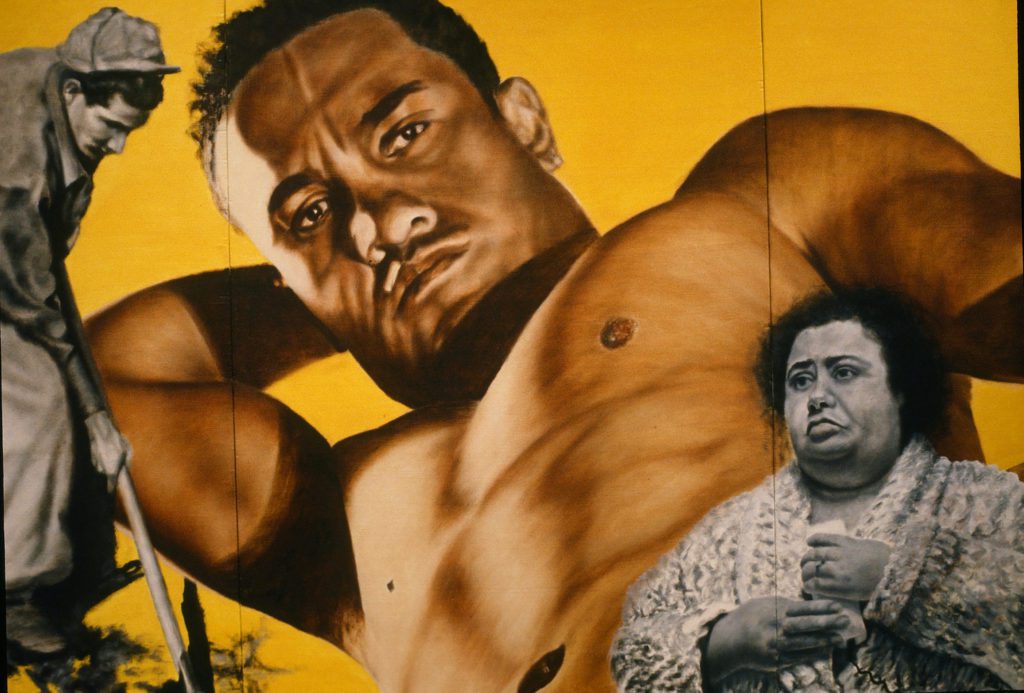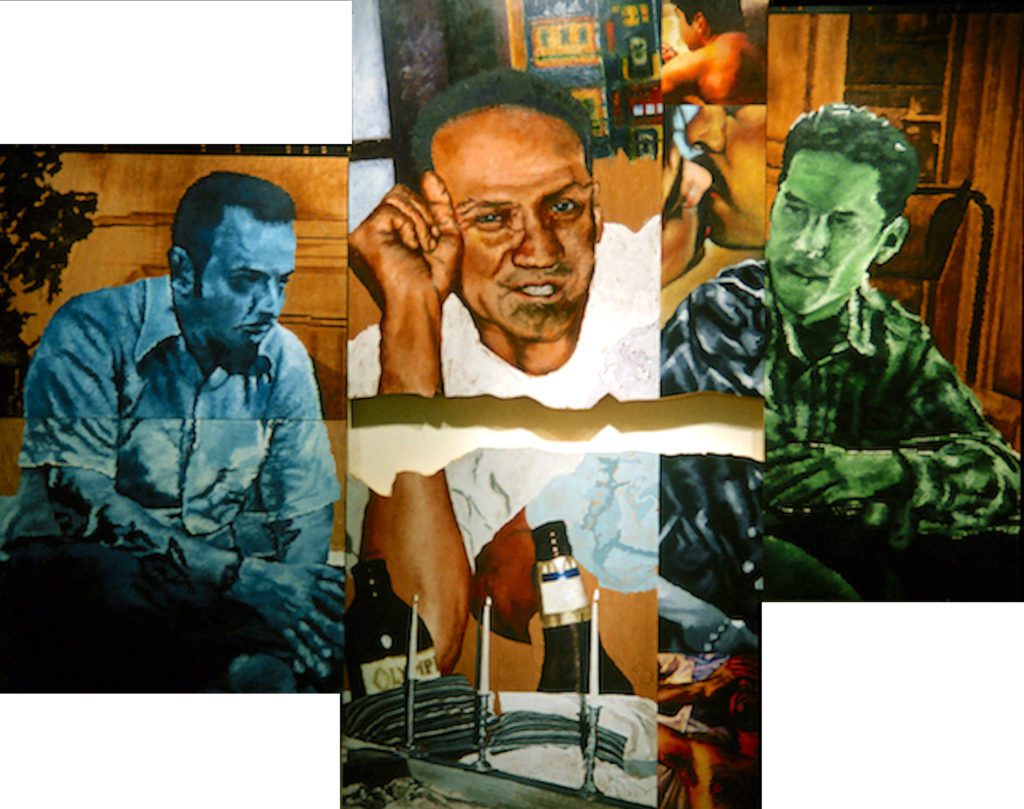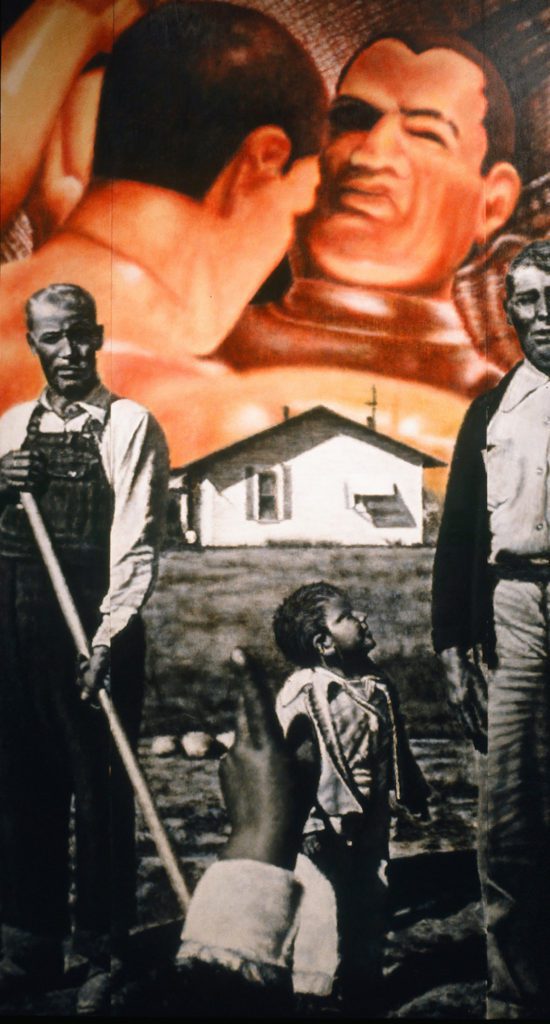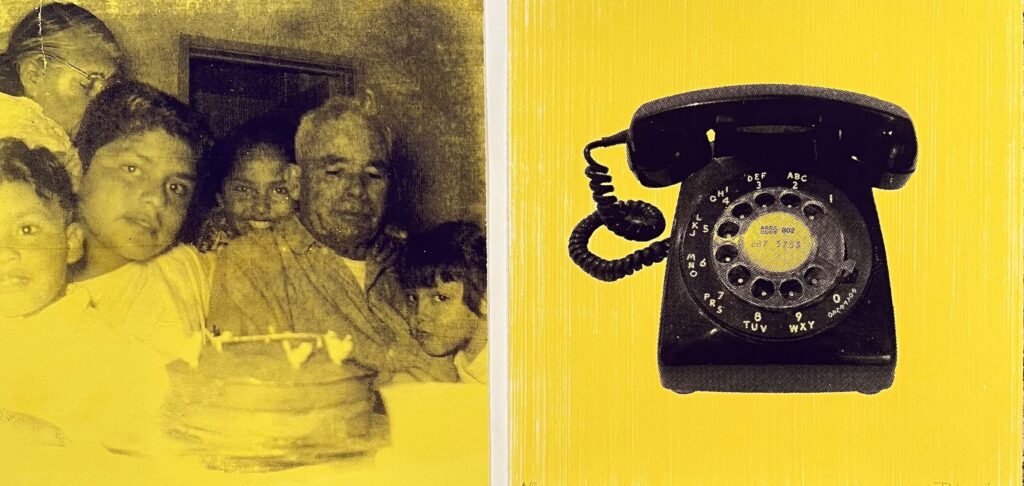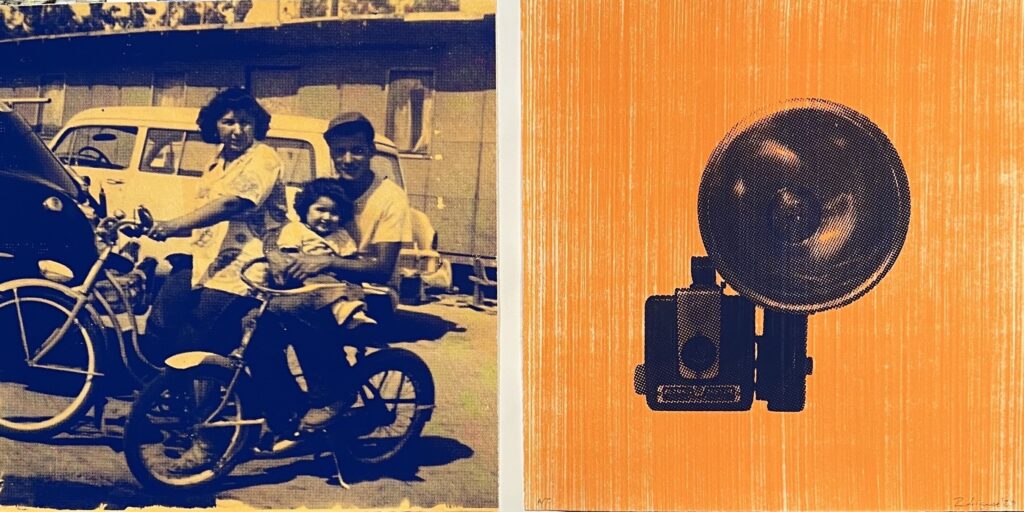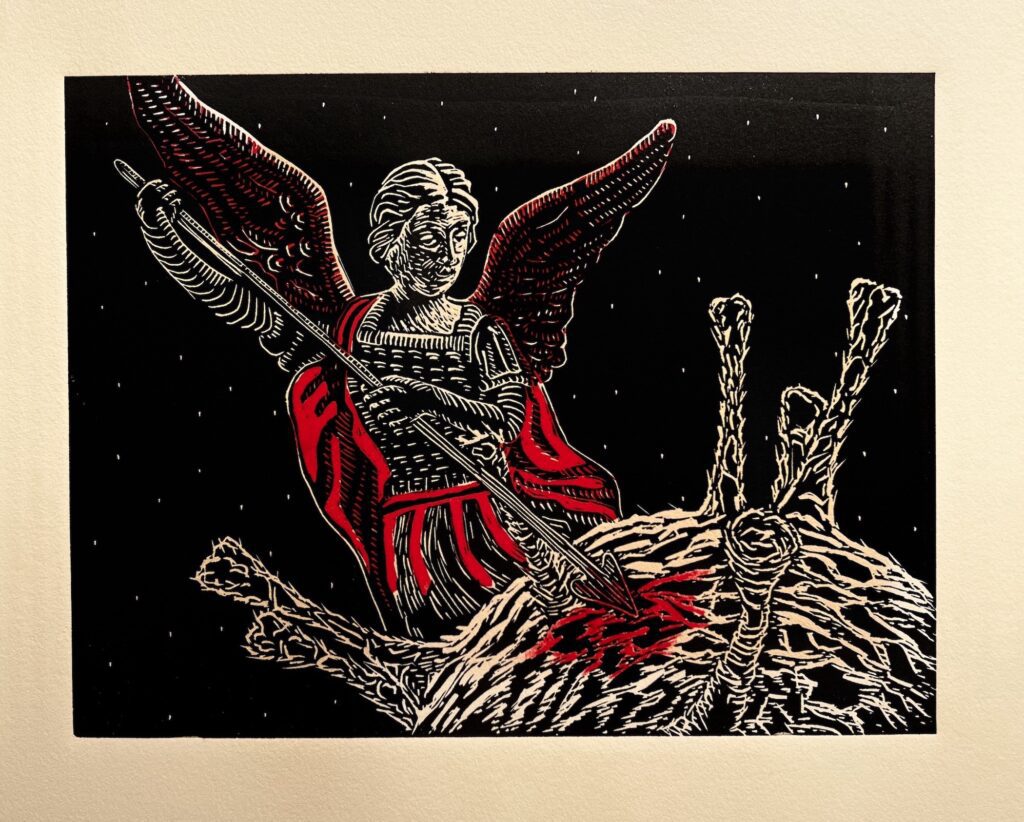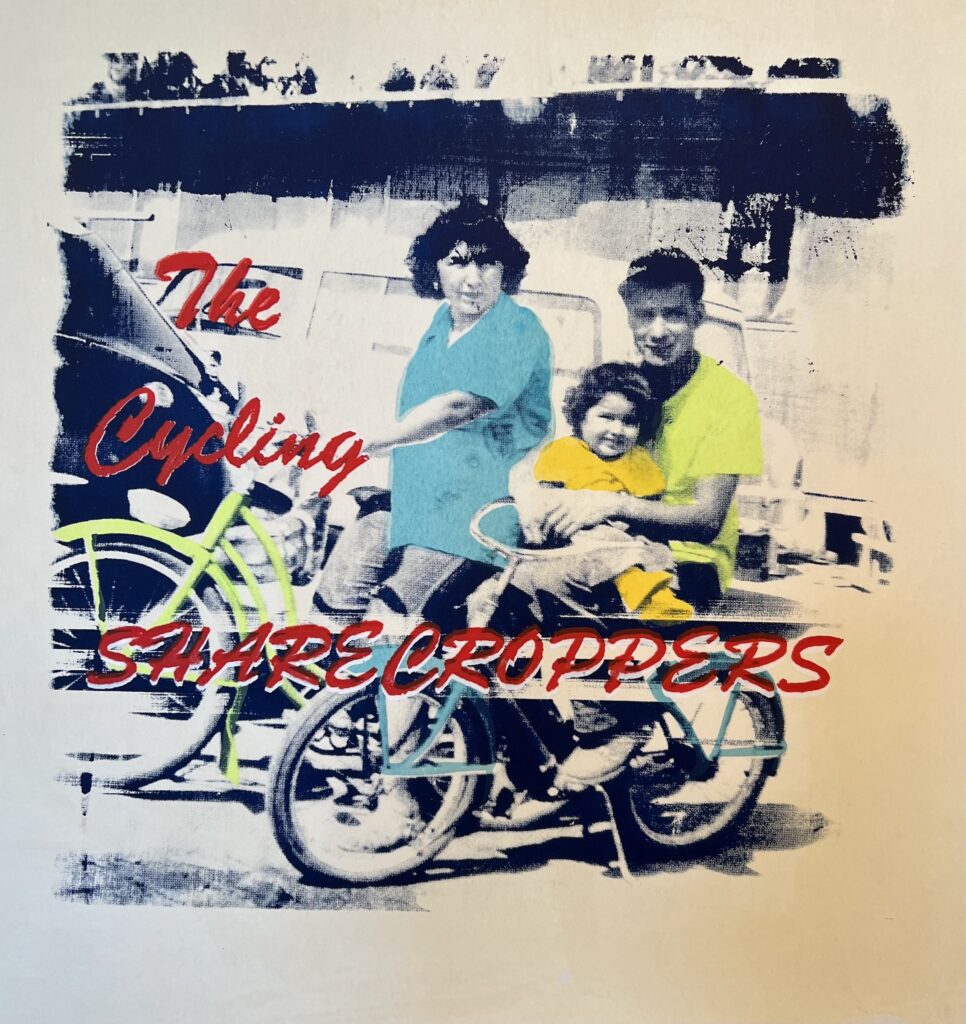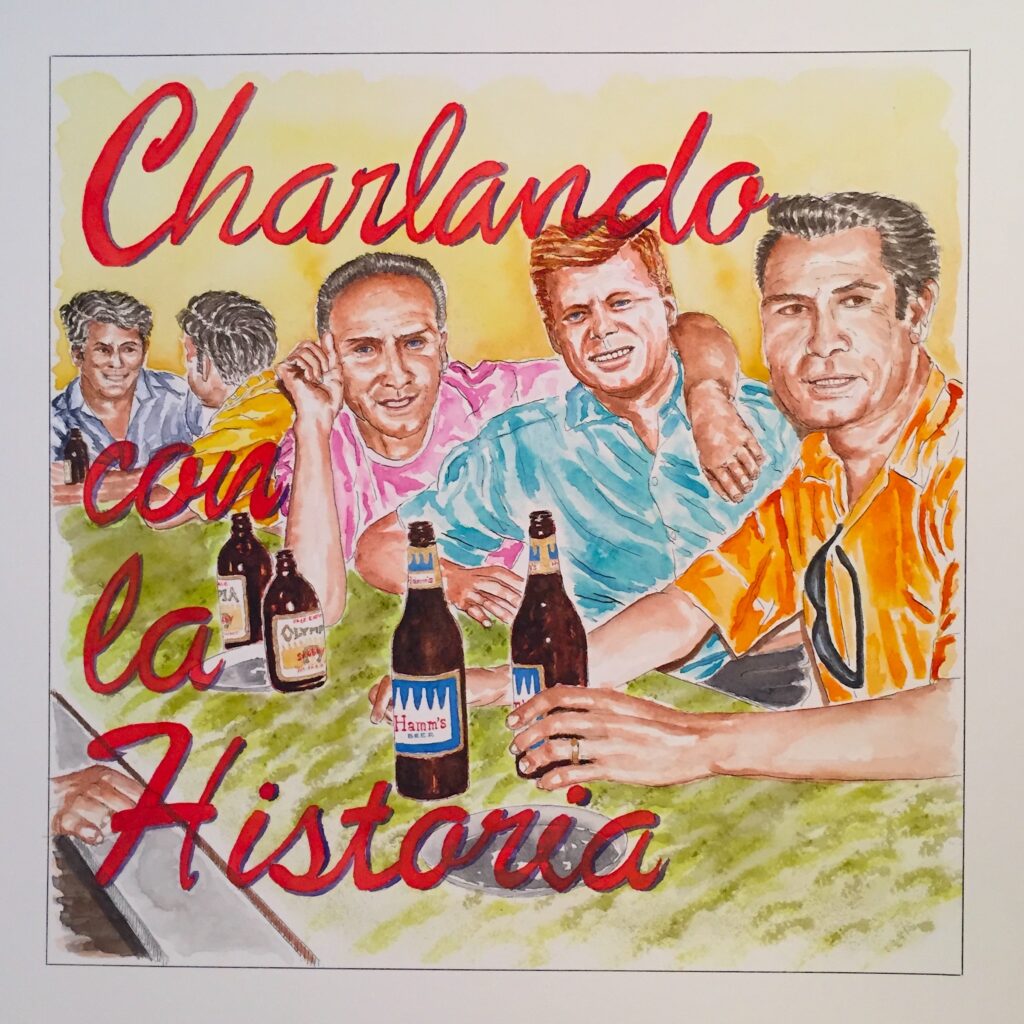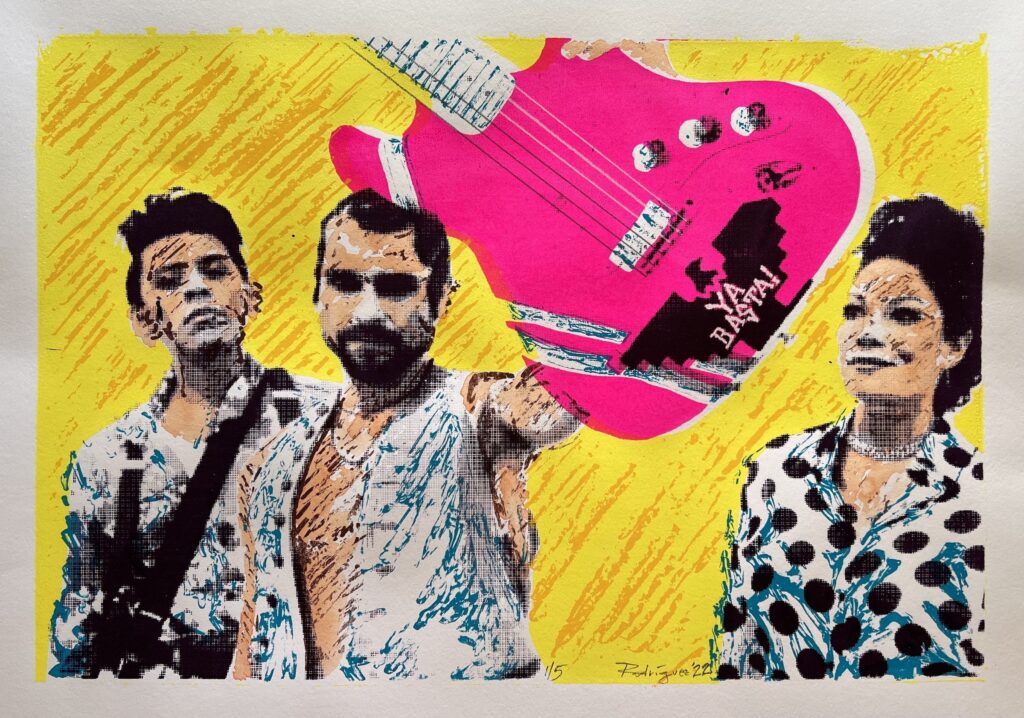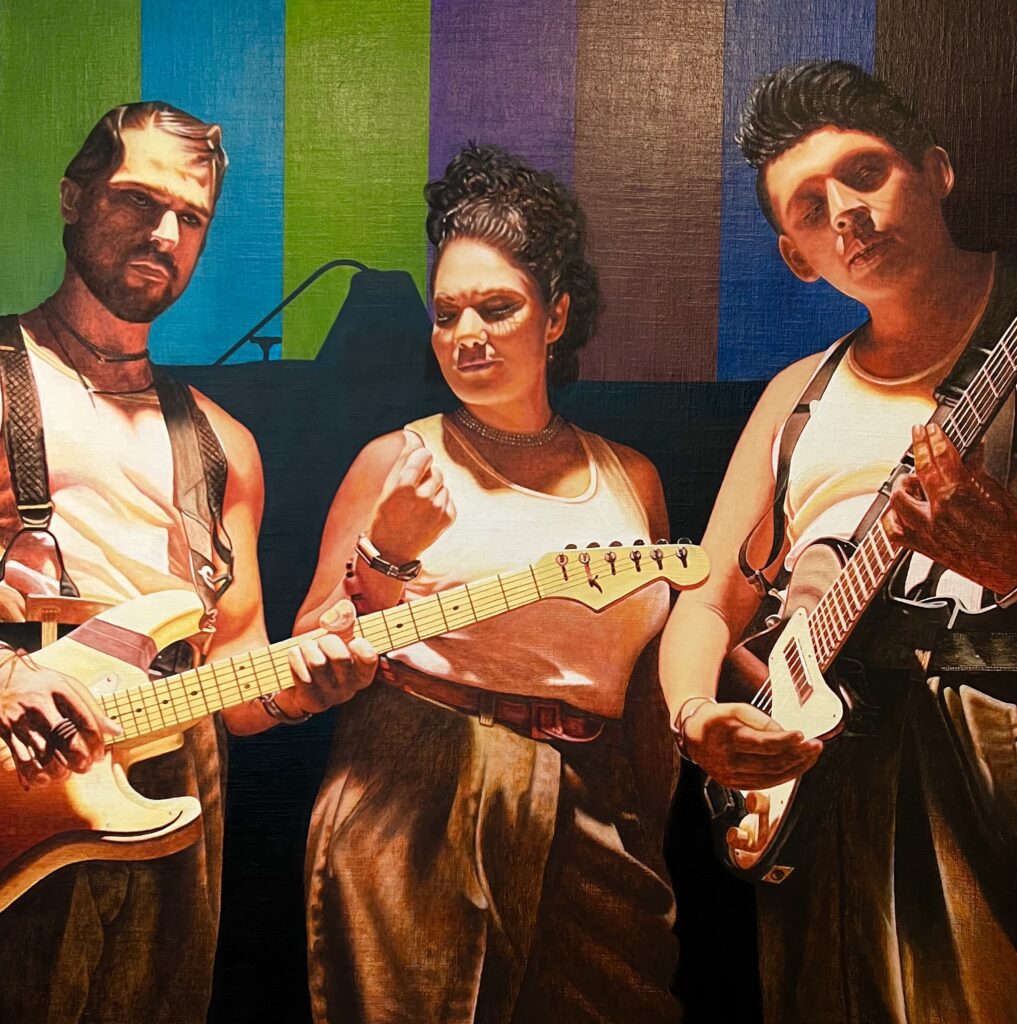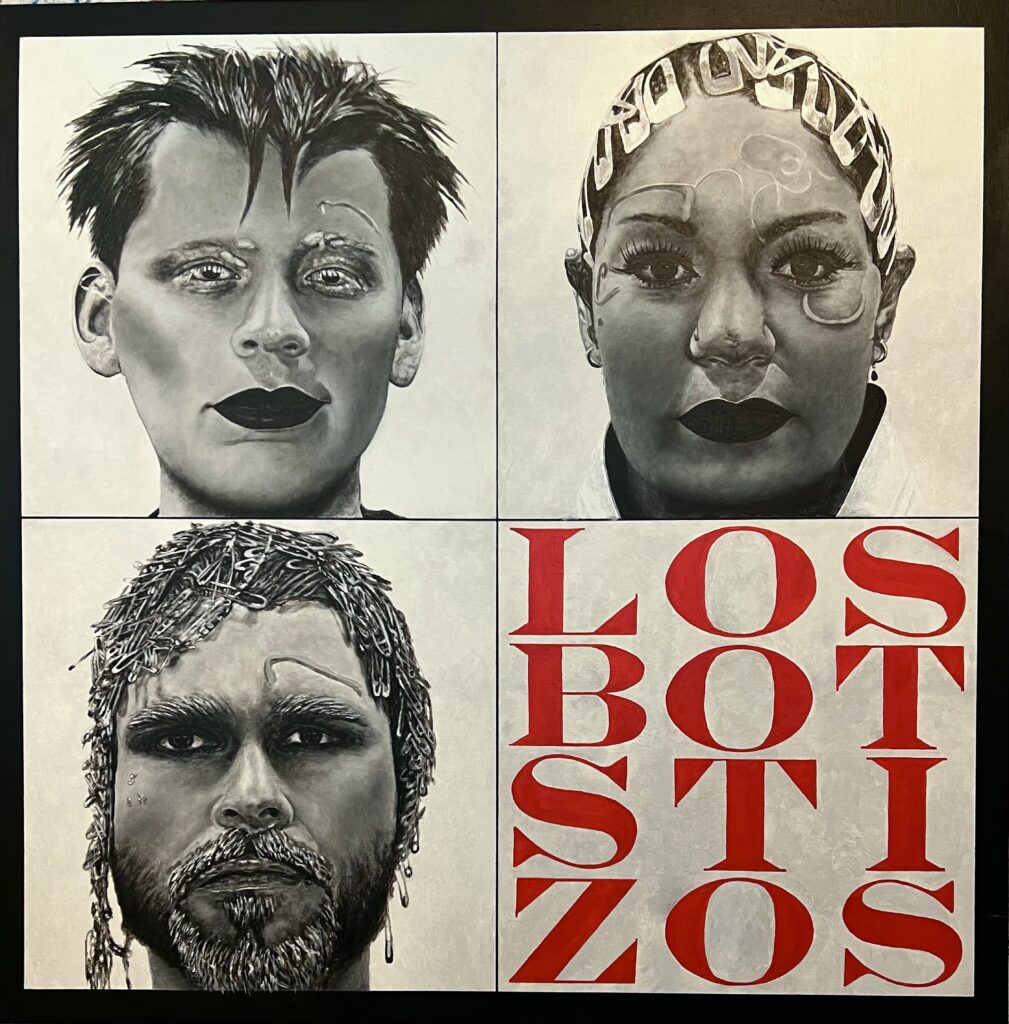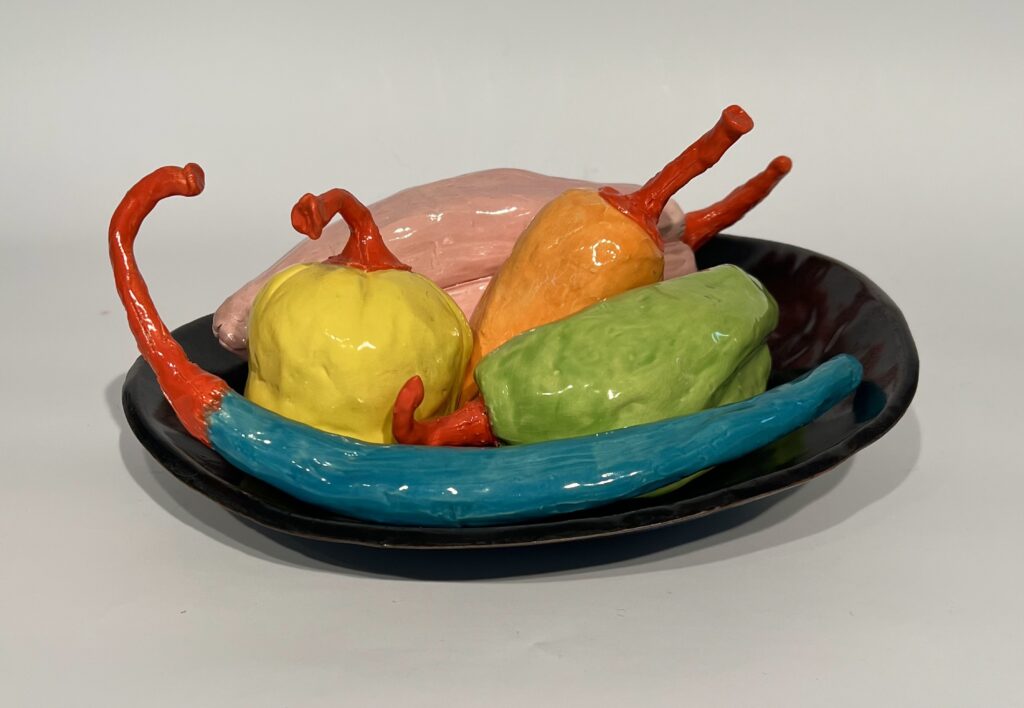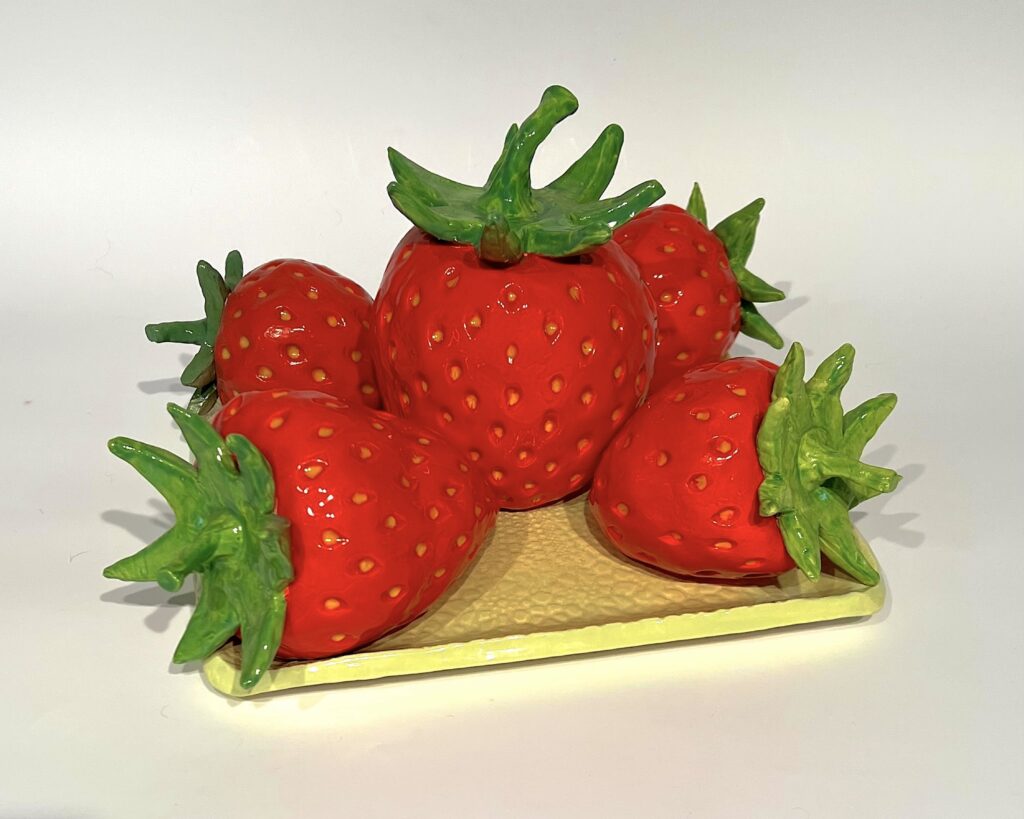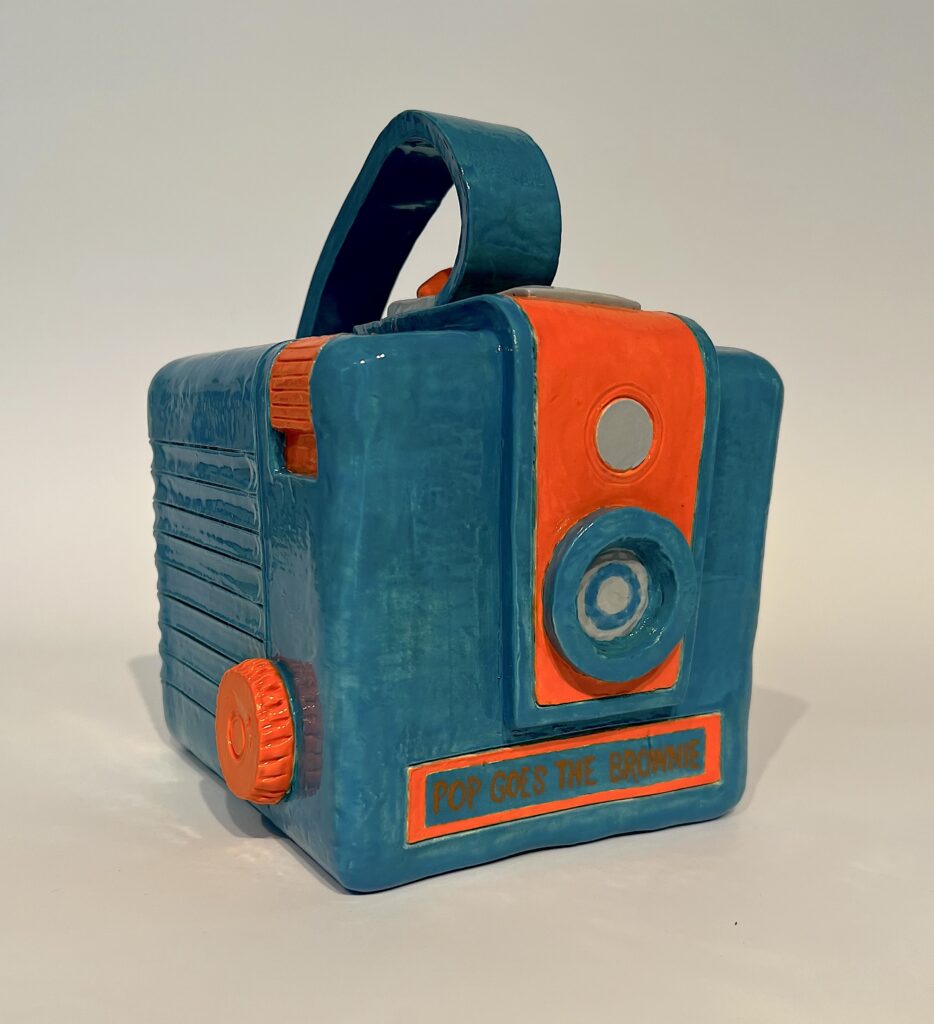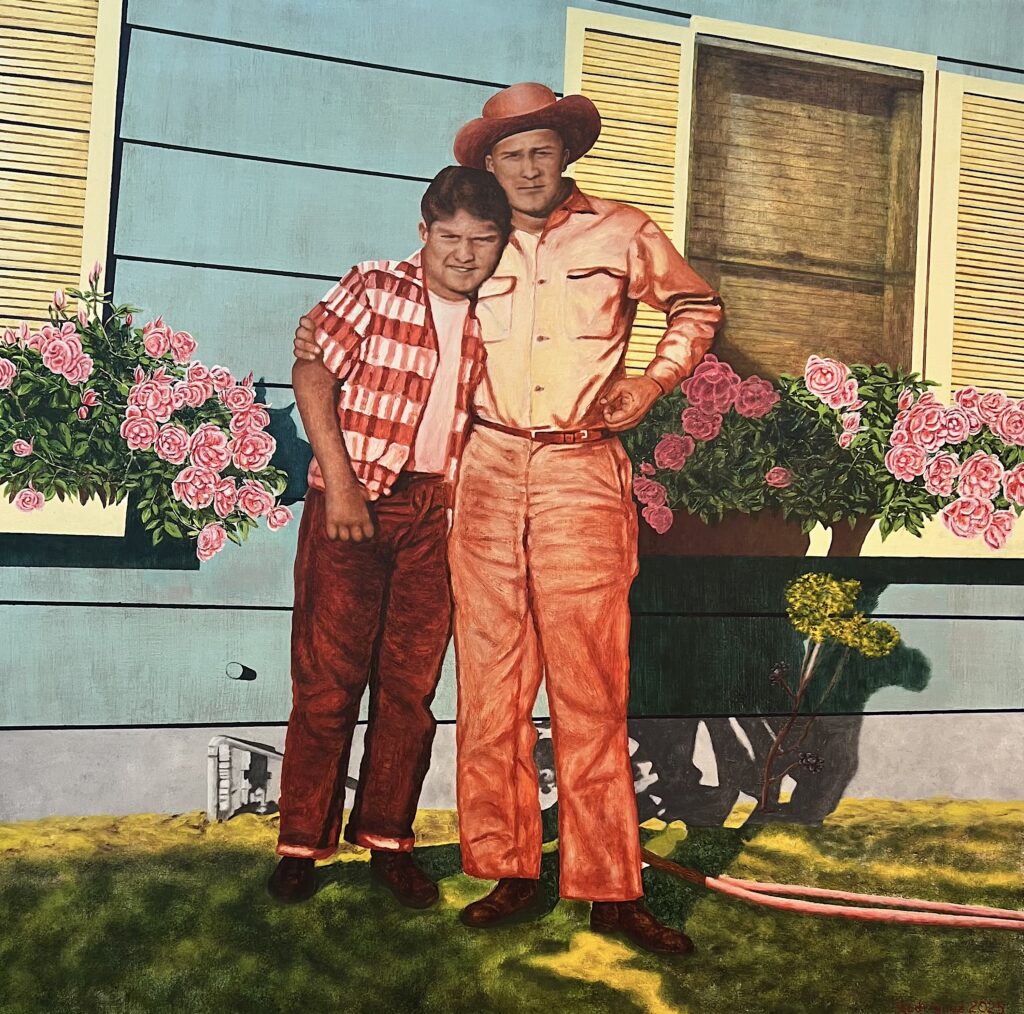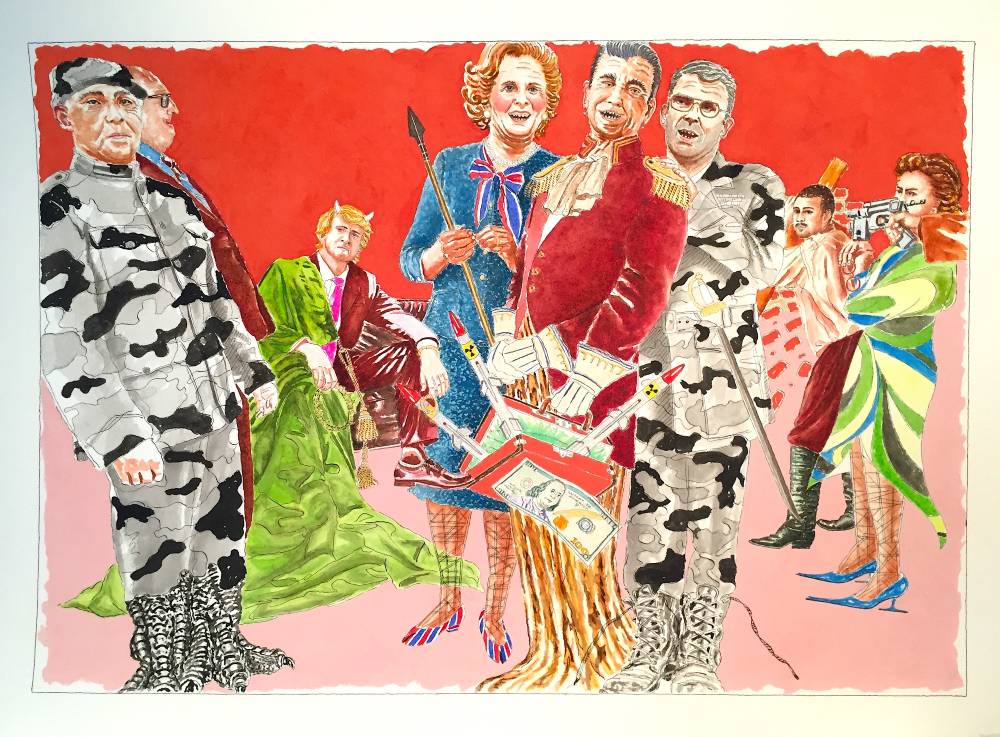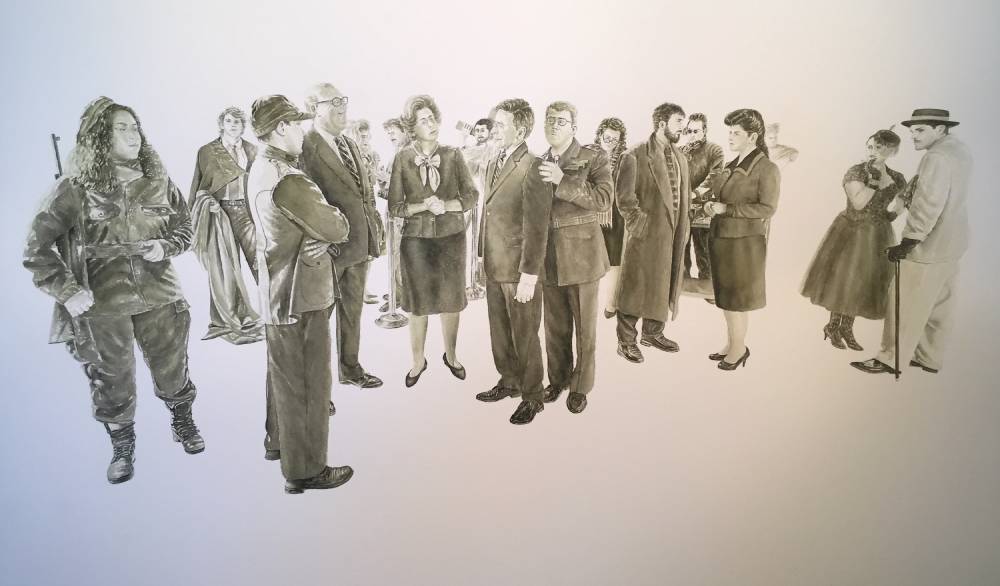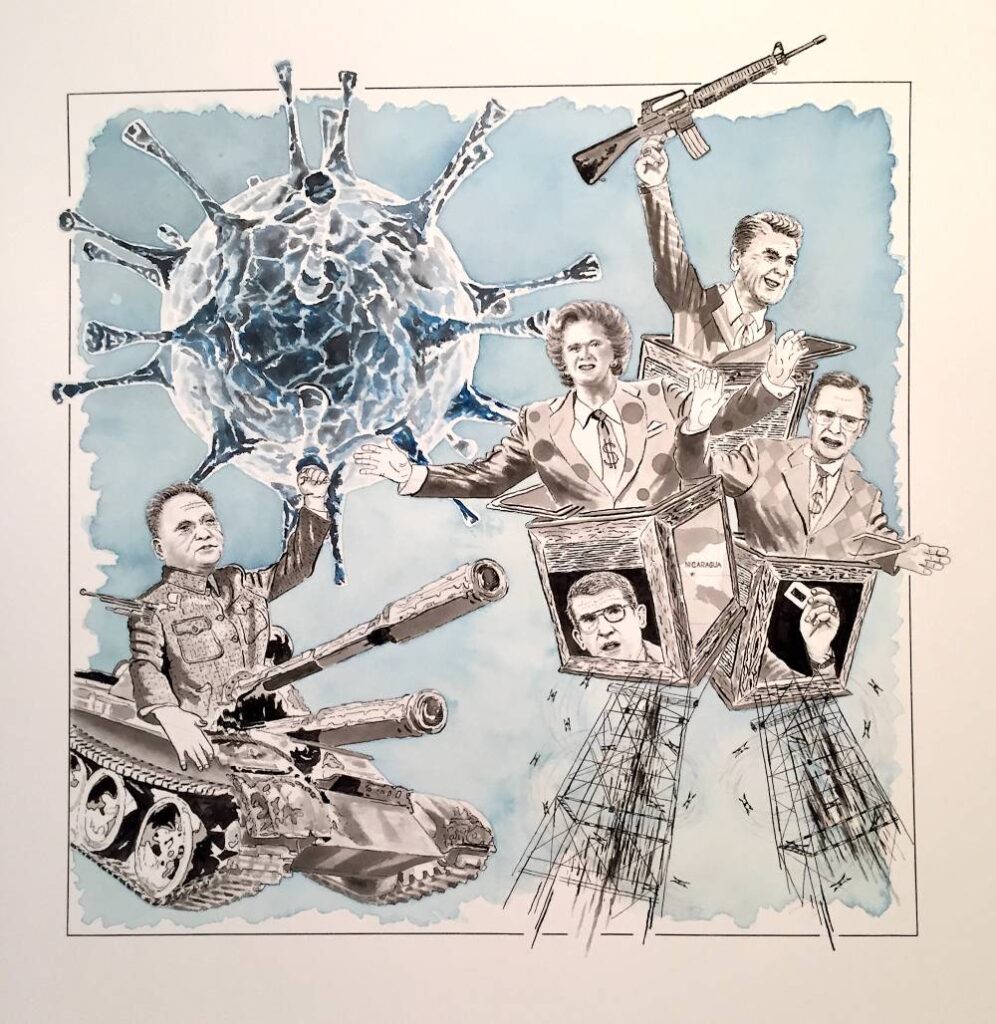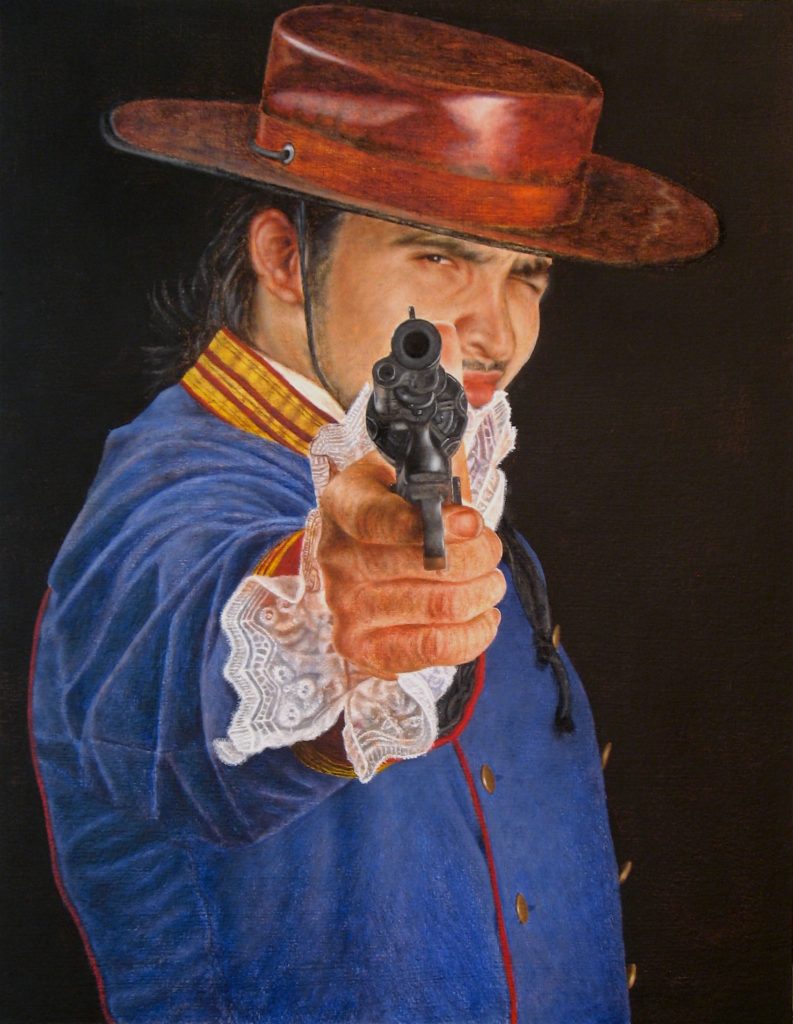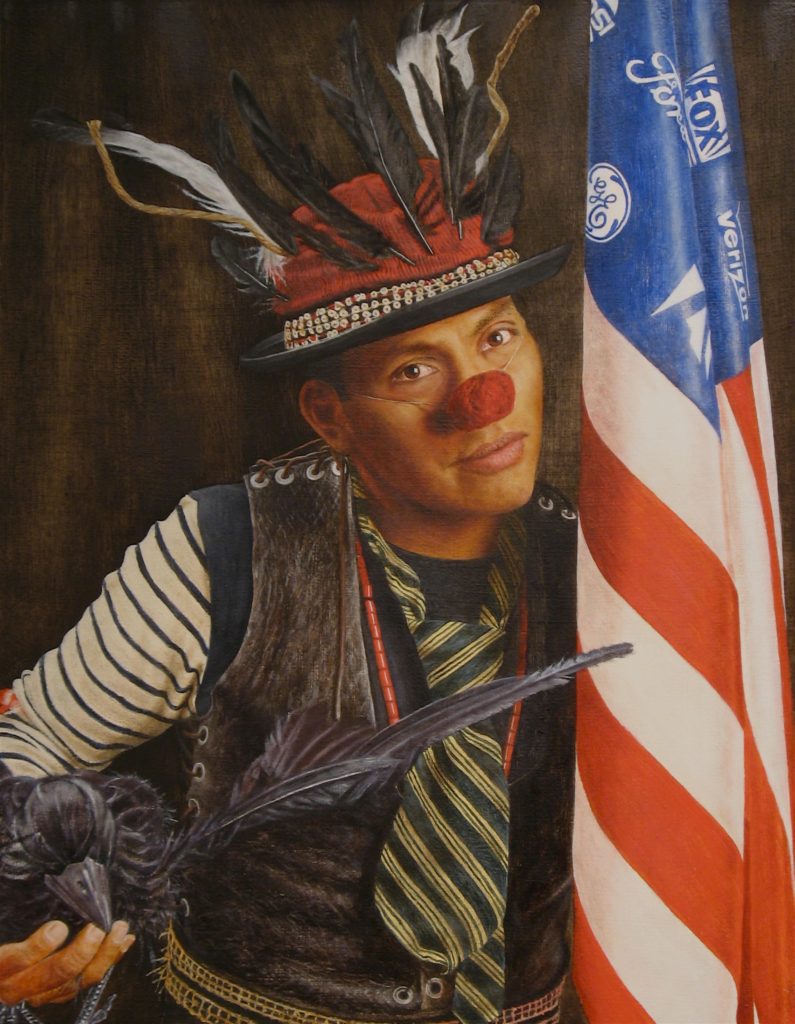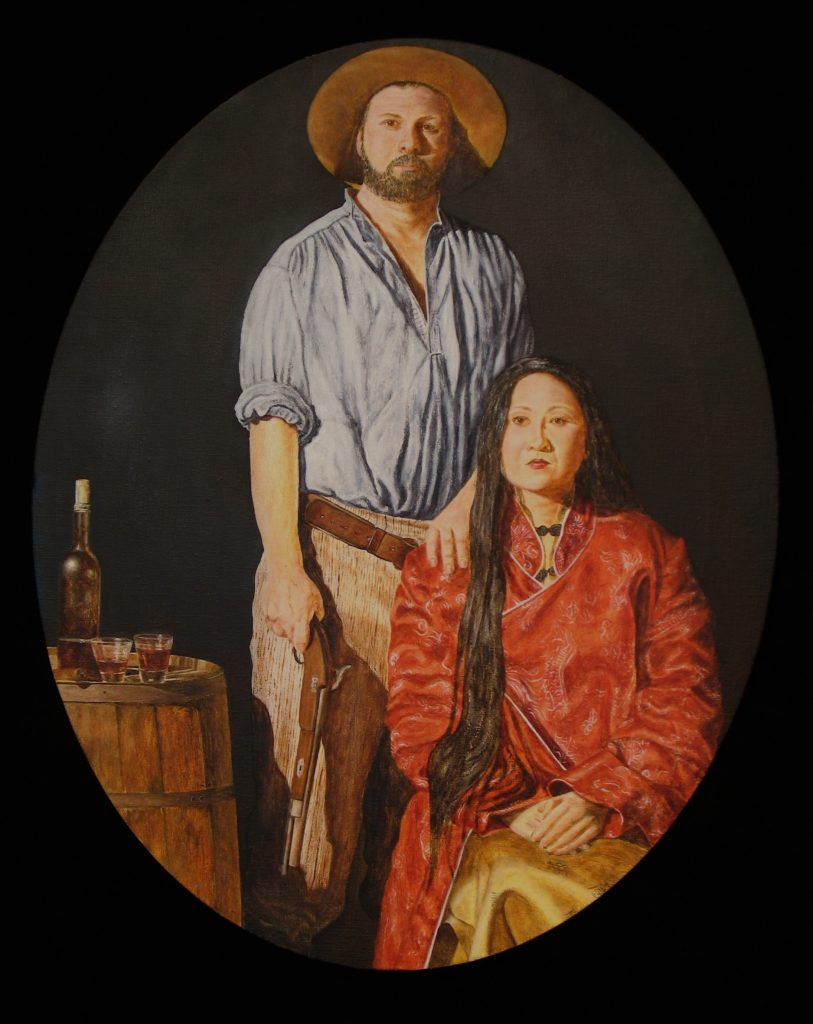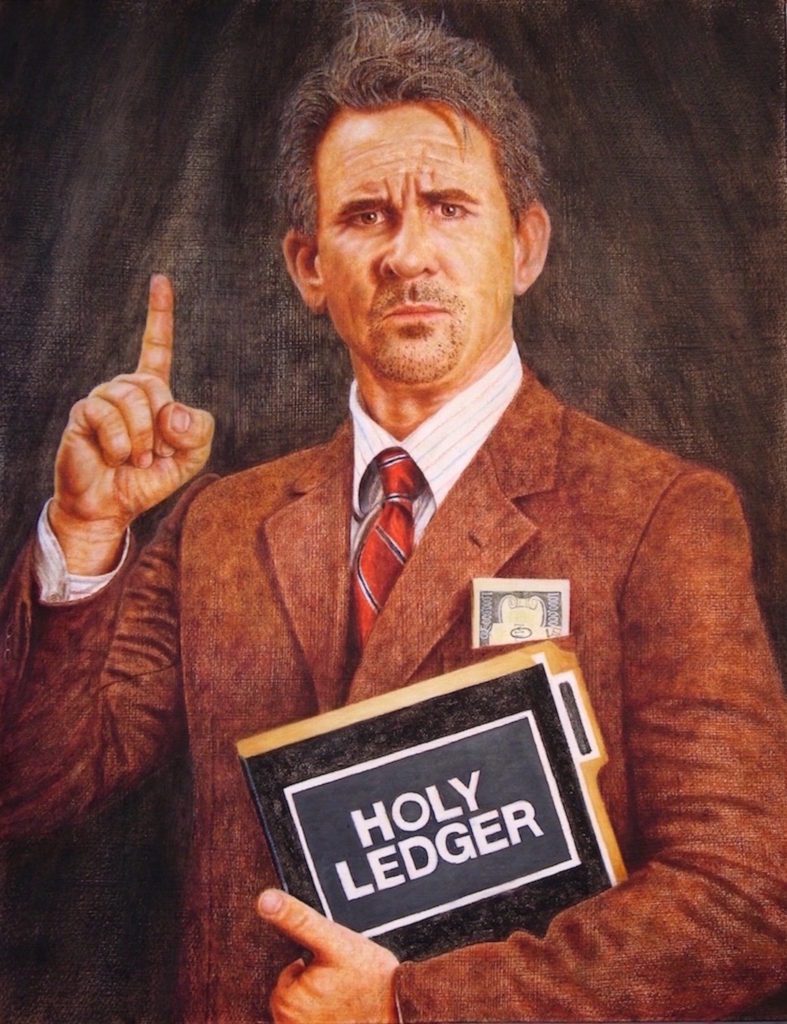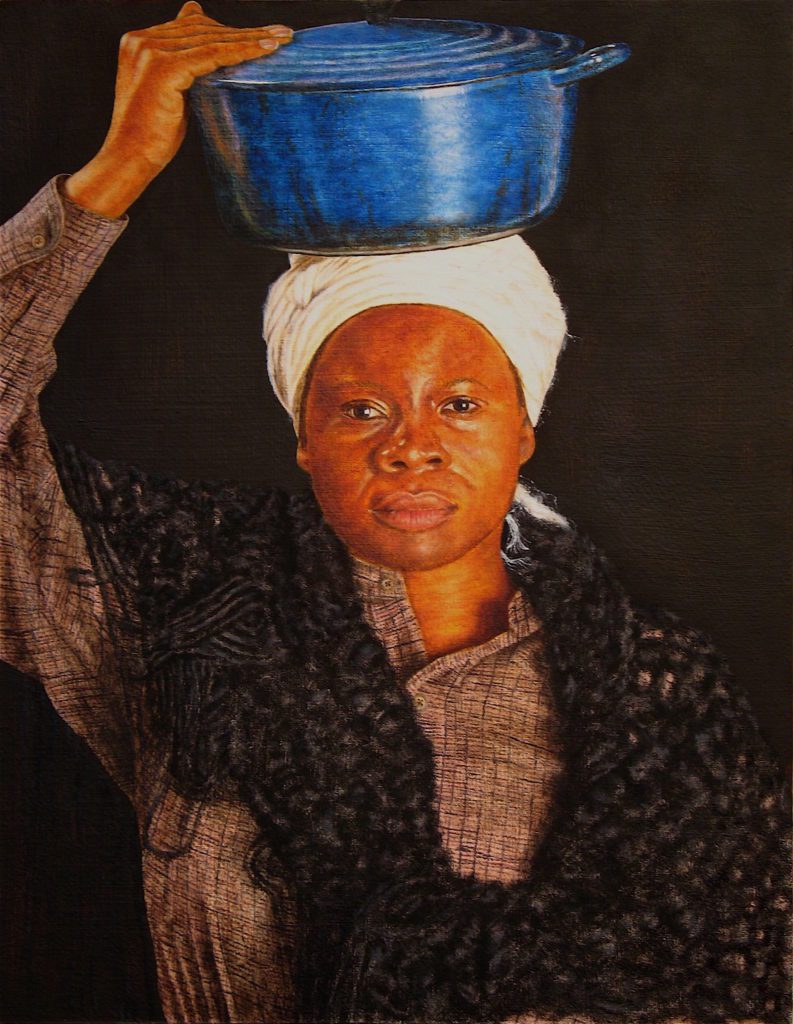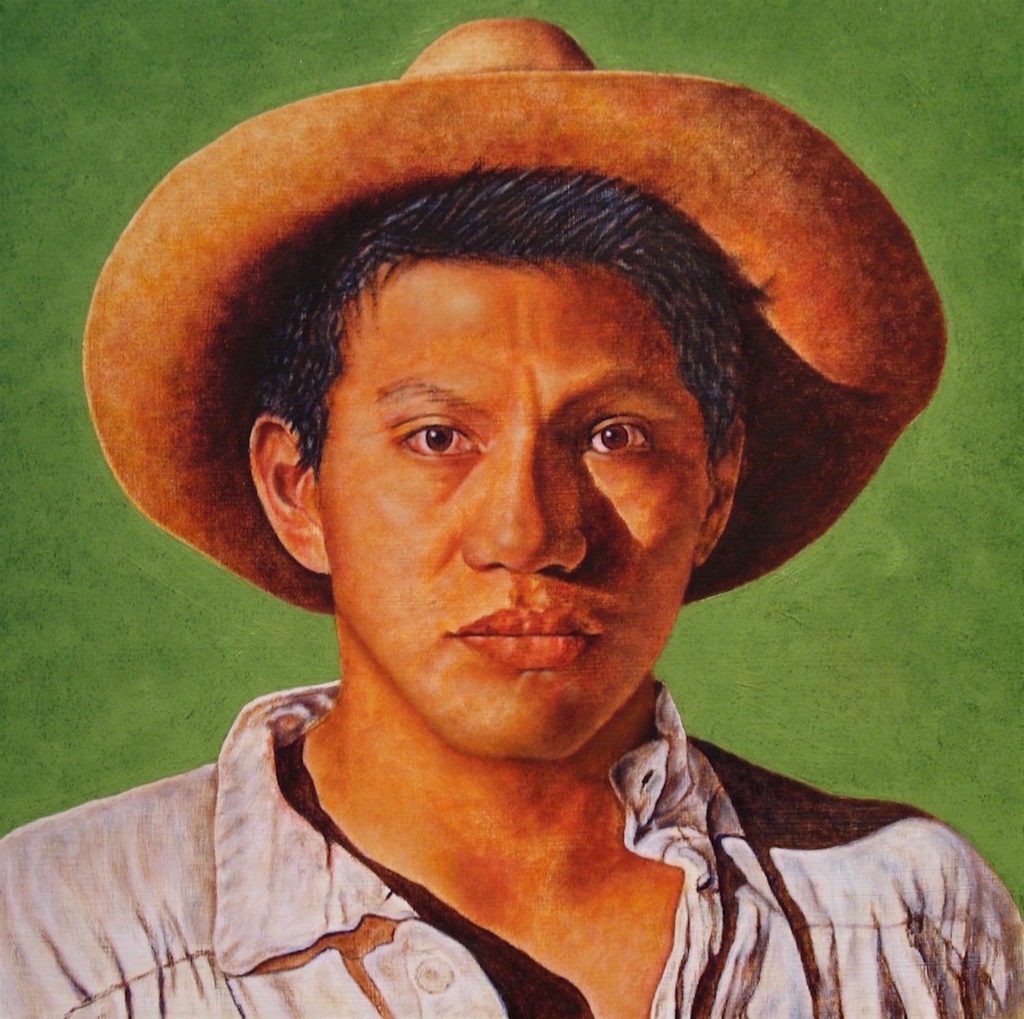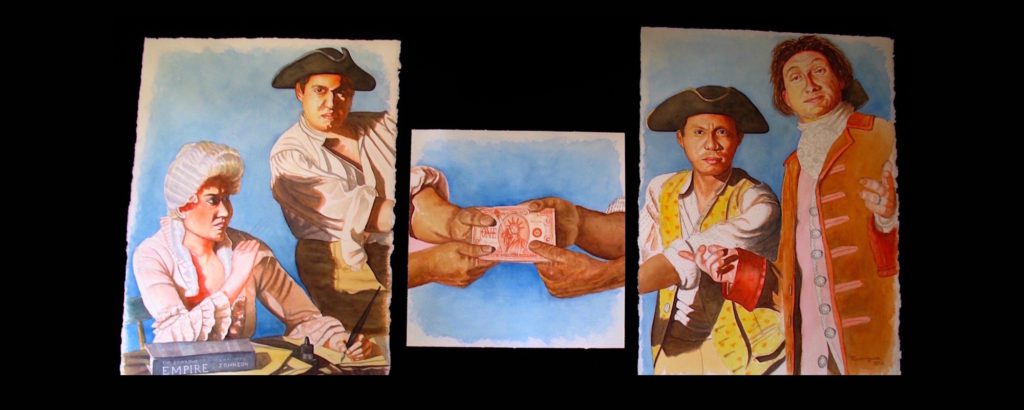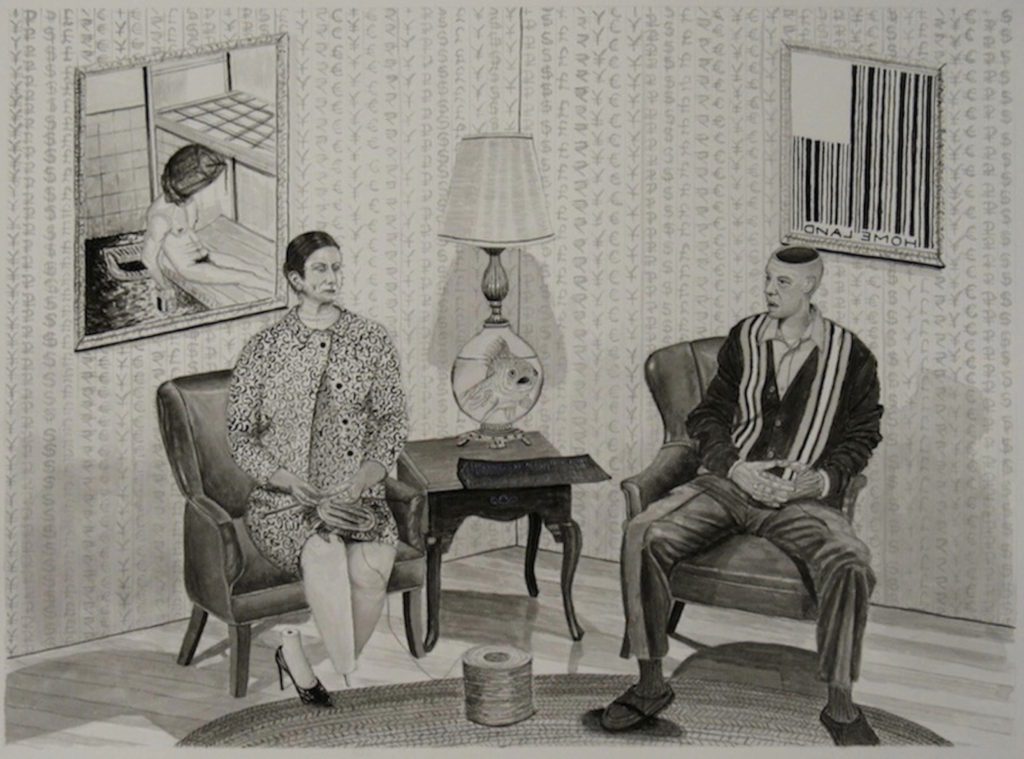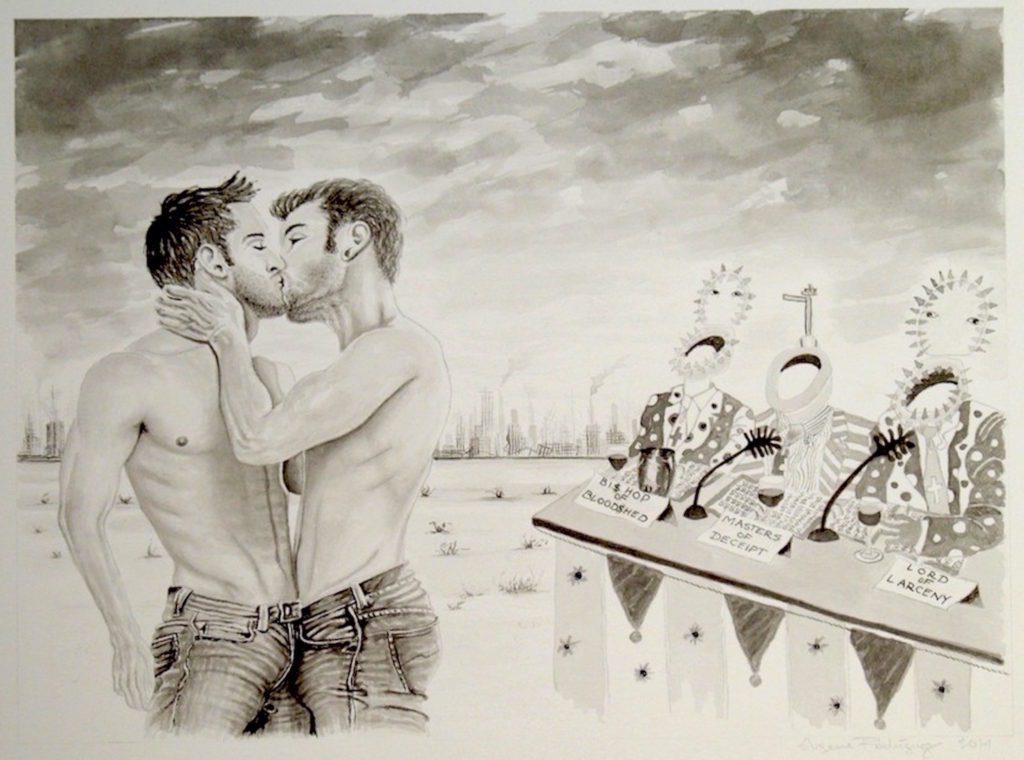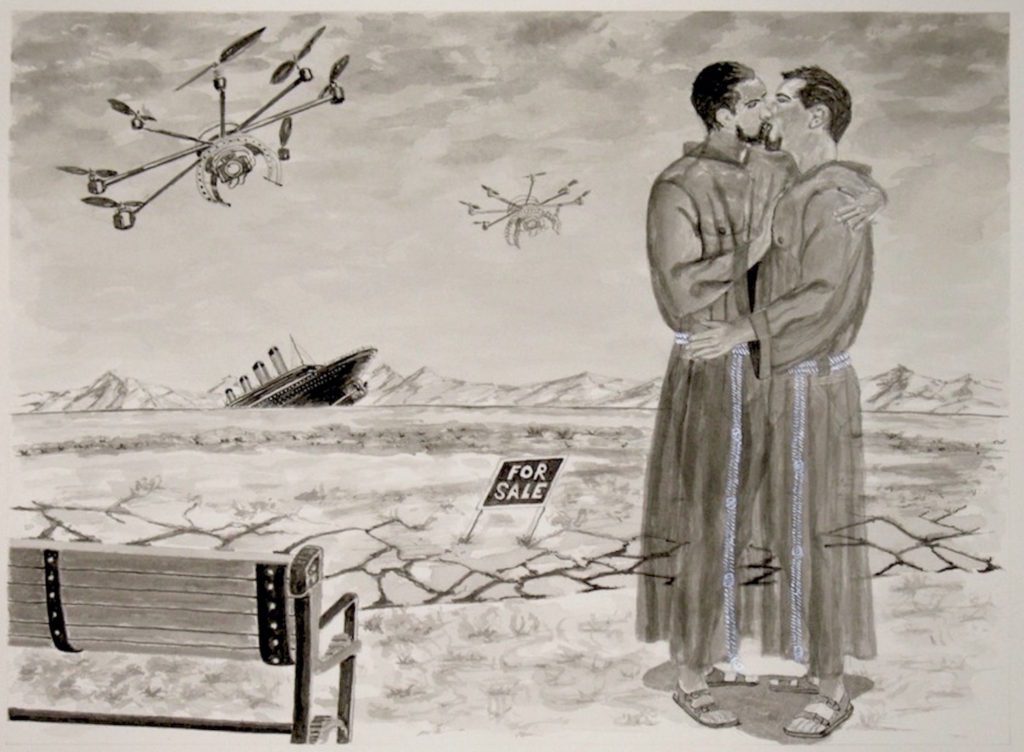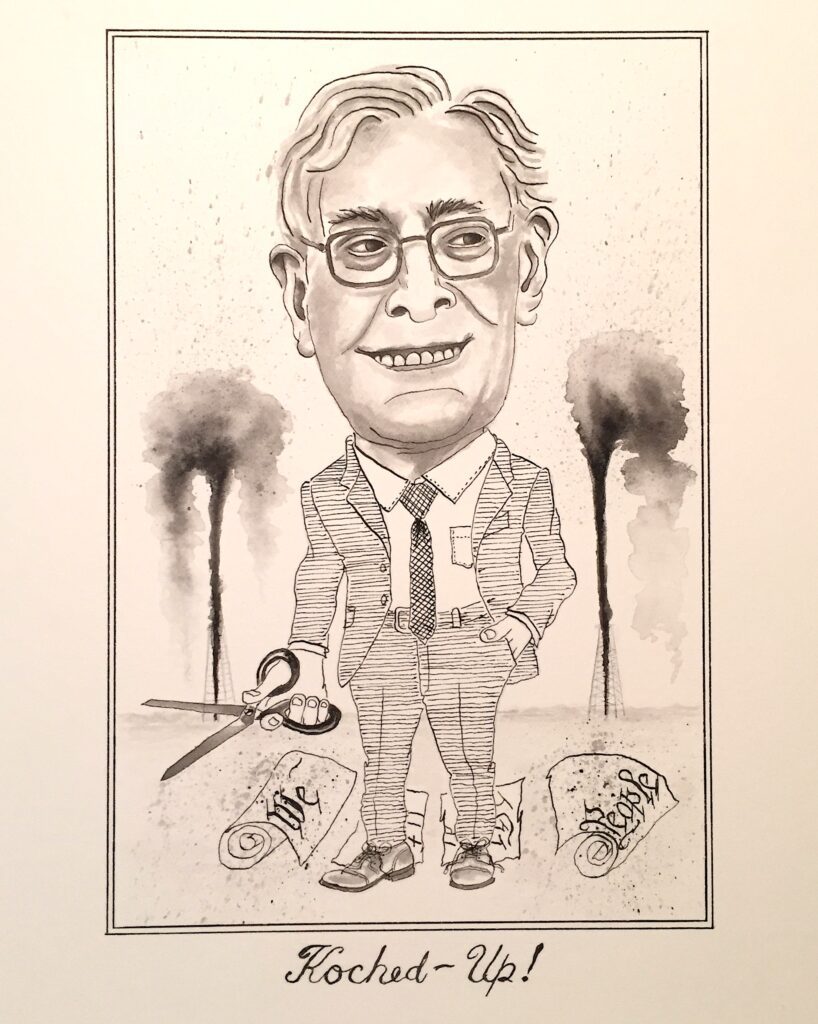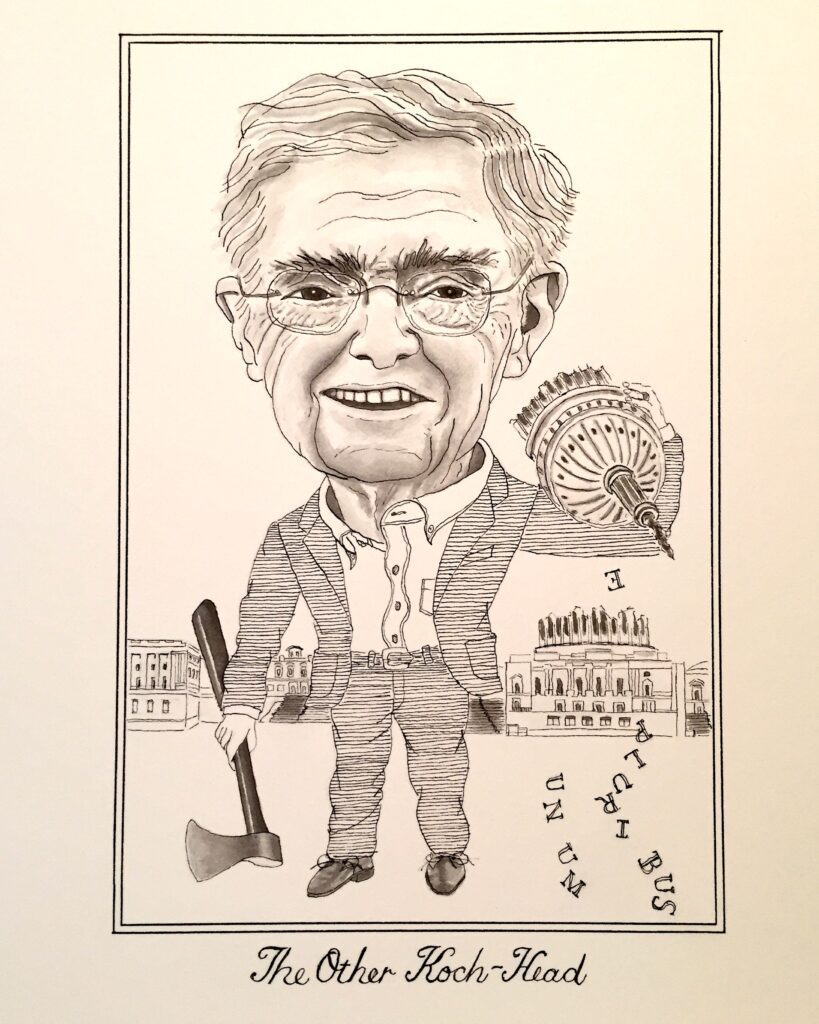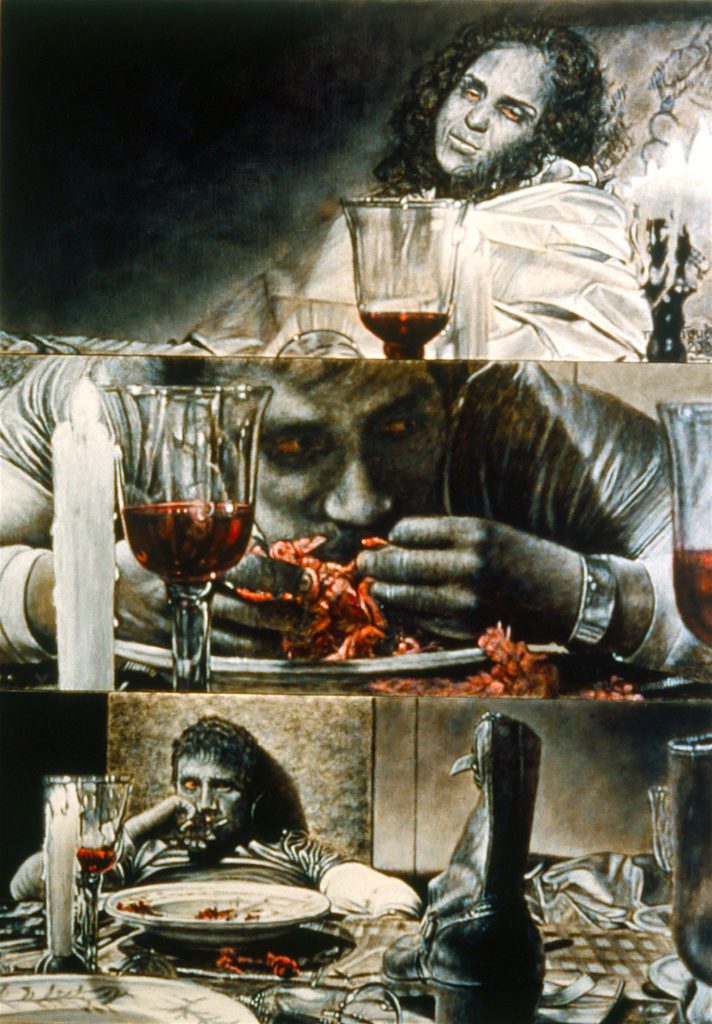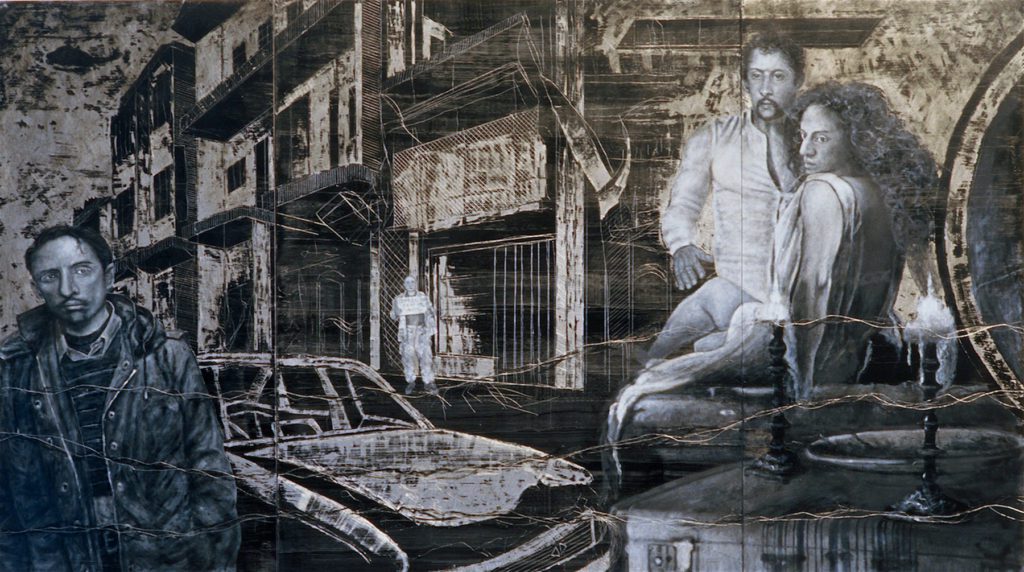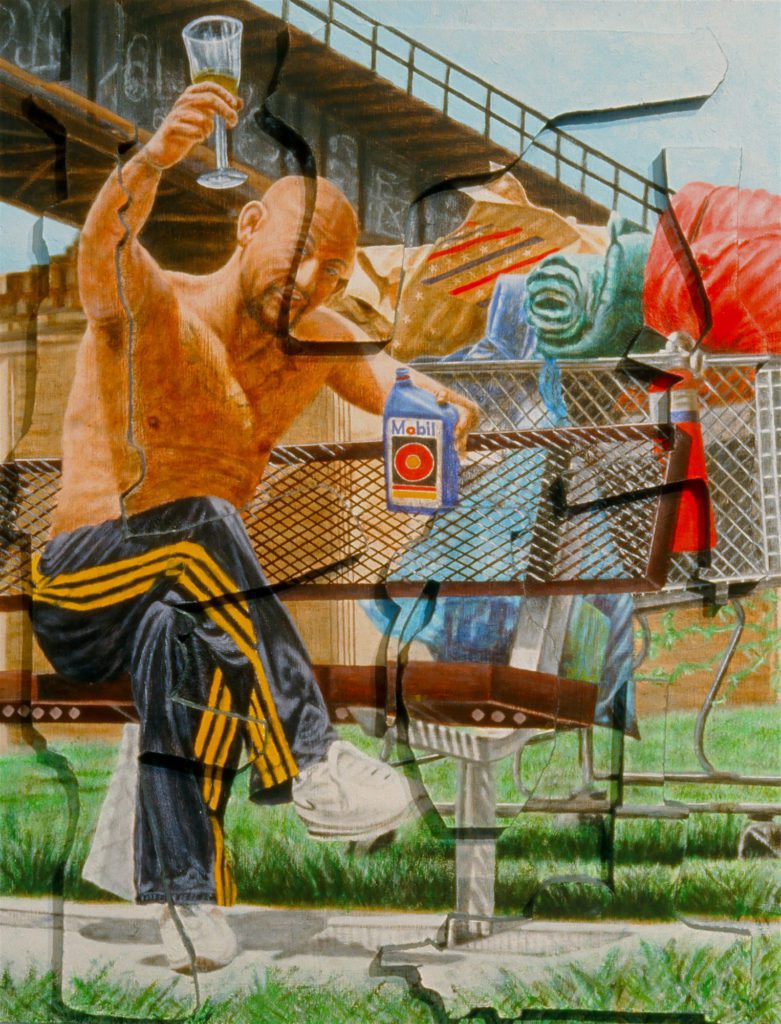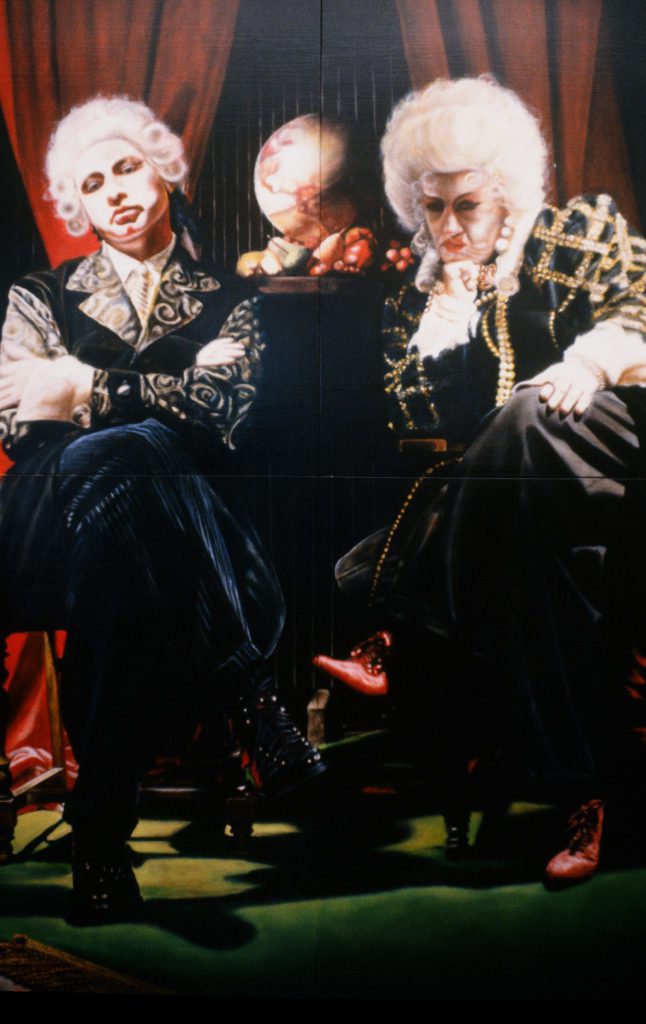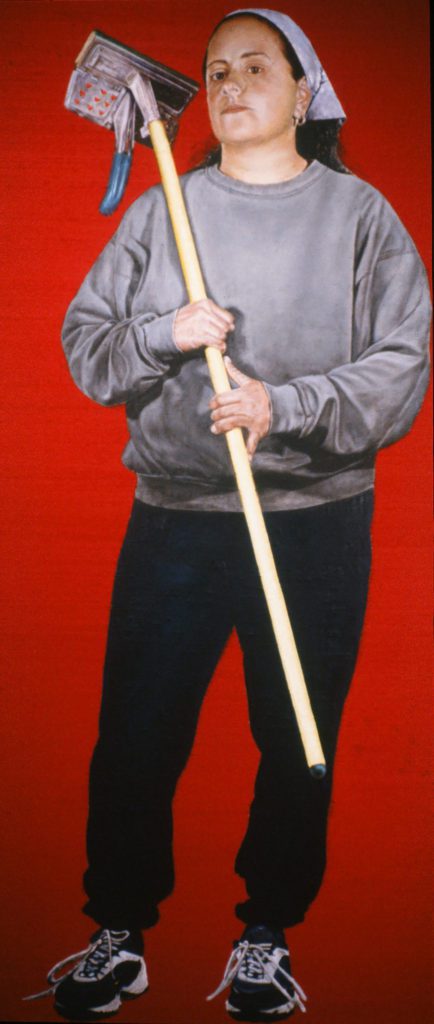PAINTINGS & SCULPTURE
2022 - 2026 - Velvet Notes: Conversando con Pedro Guzmán
My art practice consists of multiple disciplines. The narratives of my paintings and prints are a mixture of my family photo album, U.S. history, and popular culture tinged with social commentary. My ceramic sculptures are a celebration of home and place inspired by everyday objects from my mother’s kitchen and father’s garage workshop. Our fractured moment serves as background in my films to question the role of art and the artist in an extremely individualistic and celebrity worshipping society.
Aesthetically my work has many influences from Saturday morning cartoons of the 1960s to the chiaroscuro effects of Baroque painting as well as the highly saturated color palette of Pop art. Twentieth century cinema, both narrative and experimental, also plays a large role in my visual vocabulary with its camera framing, editing, and storytelling techniques.
In these turbulent times as more people turn to corporate media sites and AI for the daily account of events, I think it is essential to examine what types of stories are being told and what new perspectives are being left out? All my work is intended to spark conversation concerning what it means to be a participant on the social/political landscape and interrogate how the media continues to influence and shape how we see each other, ourselves and the world.
2019 – 2022 – WARPED
WARPED is a series of paintings and drawings that catapults the viewer into the year 2060 but not before taking a kaleidoscopic romp through the 20th century. The narratives are a mixup of politics, popular culture and film history as well as images from my family photo album. The paintings and drawings are meant to serve as provocations about where we are going (at warp speed) on this roller coaster of progress. Now that we have simultaneously entered the fun house and haunted mansion, what can we expect on the other side when we exit this house of mirrors?
2016-2018 - AFTER A SOMEWHAT PROLONGED LAPSE OF MEMORY
My latest body of work, After A Somewhat Prolonged Lapse Of Memory, acts as a portal for time travel and looks at the history of the American people through the lens of those that have been left out. The series is comprised of paintings, drawings, and a short film.
On our travels through time, we meet historical characters from the American Revolution to the California Gold Rush. Then in the year 2050 we are introduced to scenes and characters that seem distant but resonate with today's issues. Some of the issues portrayed include racism, endless war, rising inequality, gender discrimination, sexualities, weakened labor unions, and the corruption of our political system. This is presented alongside our current obsession with new media technologies and the challenges presented as we struggle to process this plethora of imagery and texts. "How does all this affect our democracy and its ability to inform and serve the will of the people?"
I am attempting to create a visual bridge between the past and present by illuminating untold and erased stories and setting them alongside exigent current events. Moreover, it is my way of participating in the ever-unfolding grand, historical drama. I see this body of work as a way to foster much needed conversations around racial, gender, and class prejudice and bring them into the public realm where action can be cultivated.
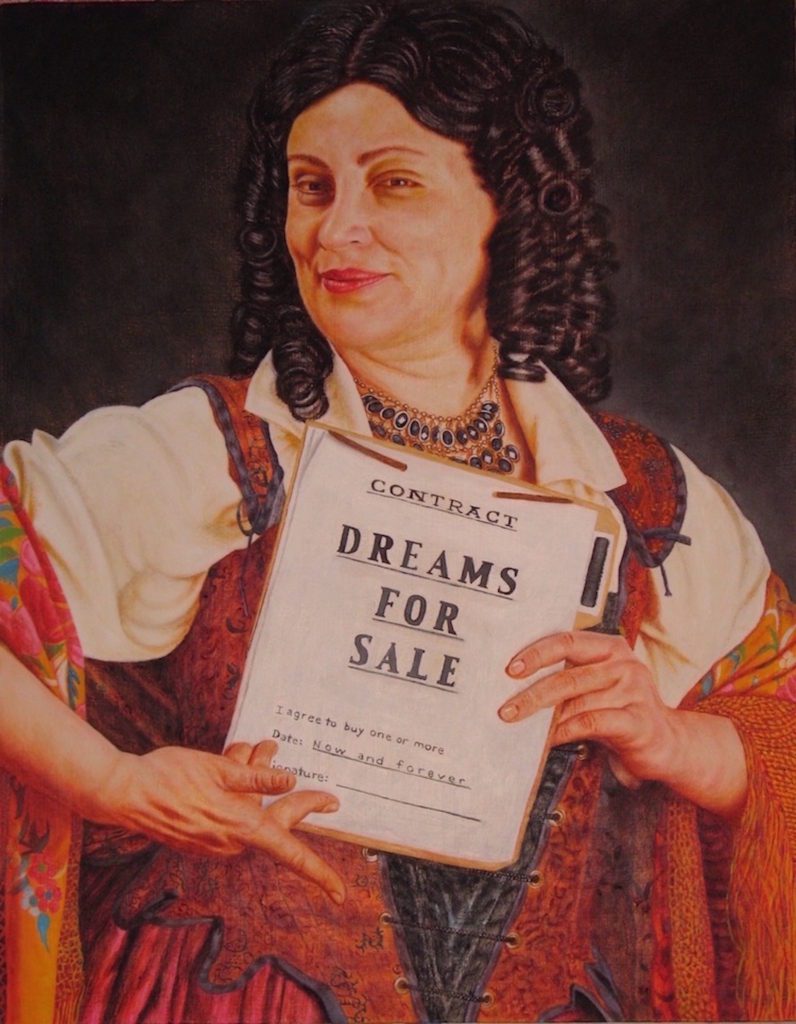


Click image to enlarge and view details
UTOPIA vs. DYSTOPIA IN THE AGE OF MYOPIA
These are political cartoons executed in response to our “post-truth” era. They are inspired by the work of Honoré Daumier, Francisco Goya, George Grosz, Otto Dix, Sue Coe, Robbie Conal, José Guadalupe Posada, Joe Sacco, and Art Young.
Click image to enlarge and view details
2009-2015 - PICTURING HISTORY: LIGHTS, DARKS, CAMERAS, AND ACTION!
While the Cold War for the most part dealt with the conflicts between the Soviet Union and the United States, it was also one of the most turbulent and transformative periods between Latin America and the United States. Picturing History: Lights, Darks, Cameras, and Action! scrutinizes the history of oil painting, television, cinema, and U.S. empire through the memories of my family photo album during the decades of the 1950s and 60s.
The staged narratives of my paintings, drawings, prints and films re-present my parents as strawberry sharecroppers in the California Central Valley, and later in Southern California, in their attempts to participate in the American Dream. Other historic actors include Joe McCarthy, Arthur Miller, Roy Cohn, Fidel Castro, Louis Armstrong, Jackson Pollock, Rita Hayworth and Pedro Infante to name a few. Juxtaposing histories and aesthetics is my way of highlighting a visual connection between past and present. It is also my way of challenging the viewer to question how past beliefs and value systems continue to influence and shape how we see others, the world and ourselves.

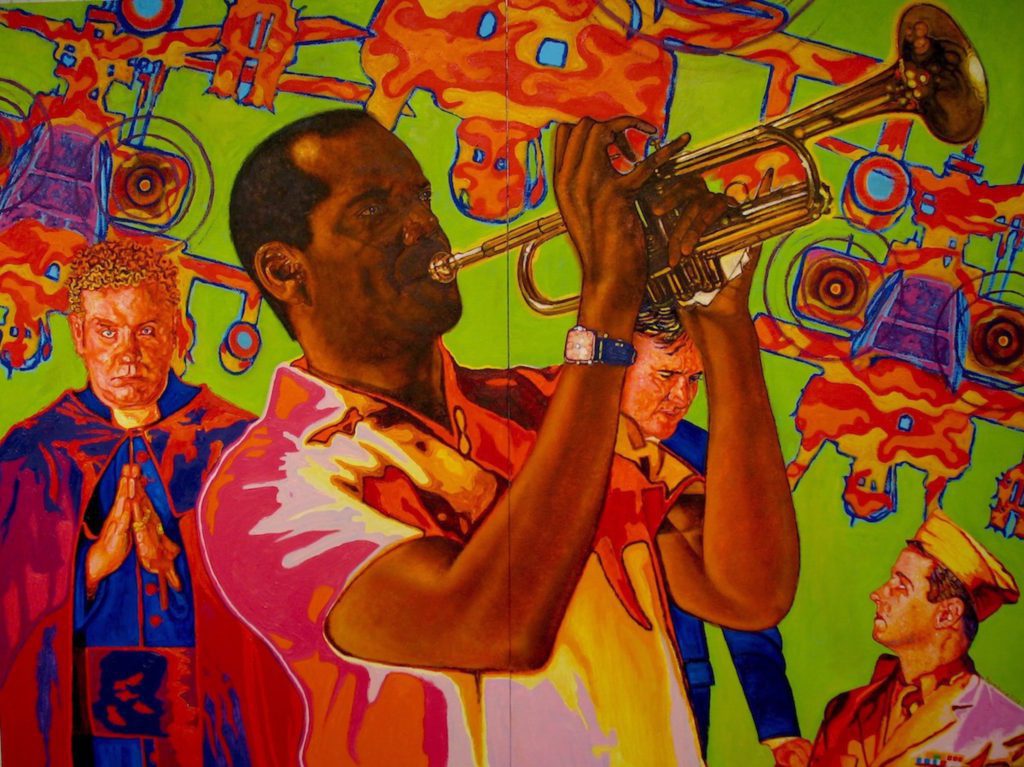
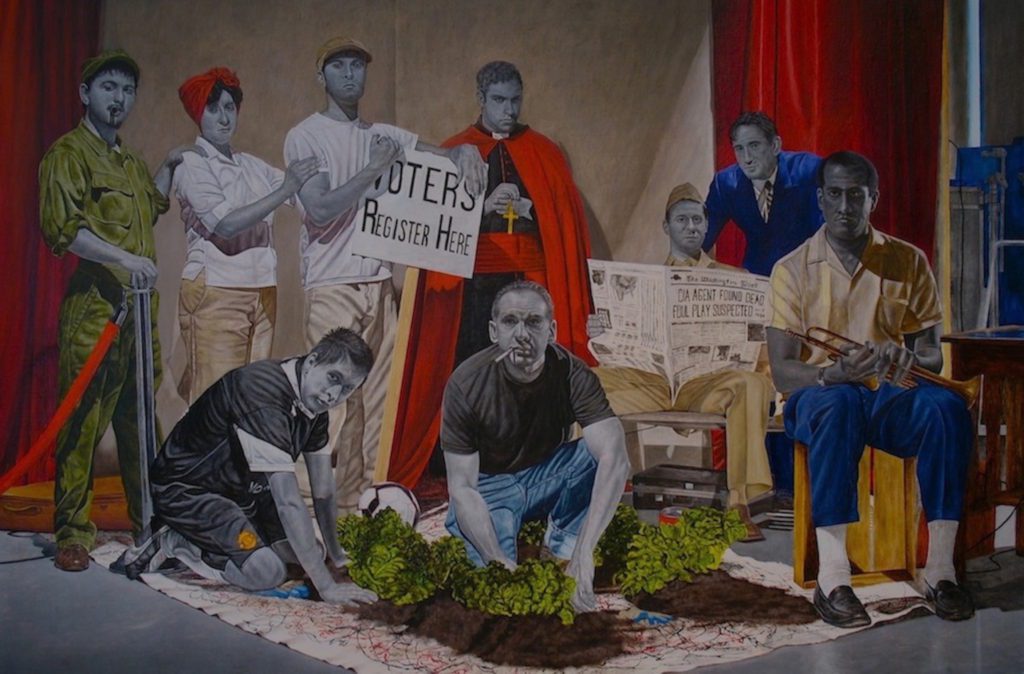
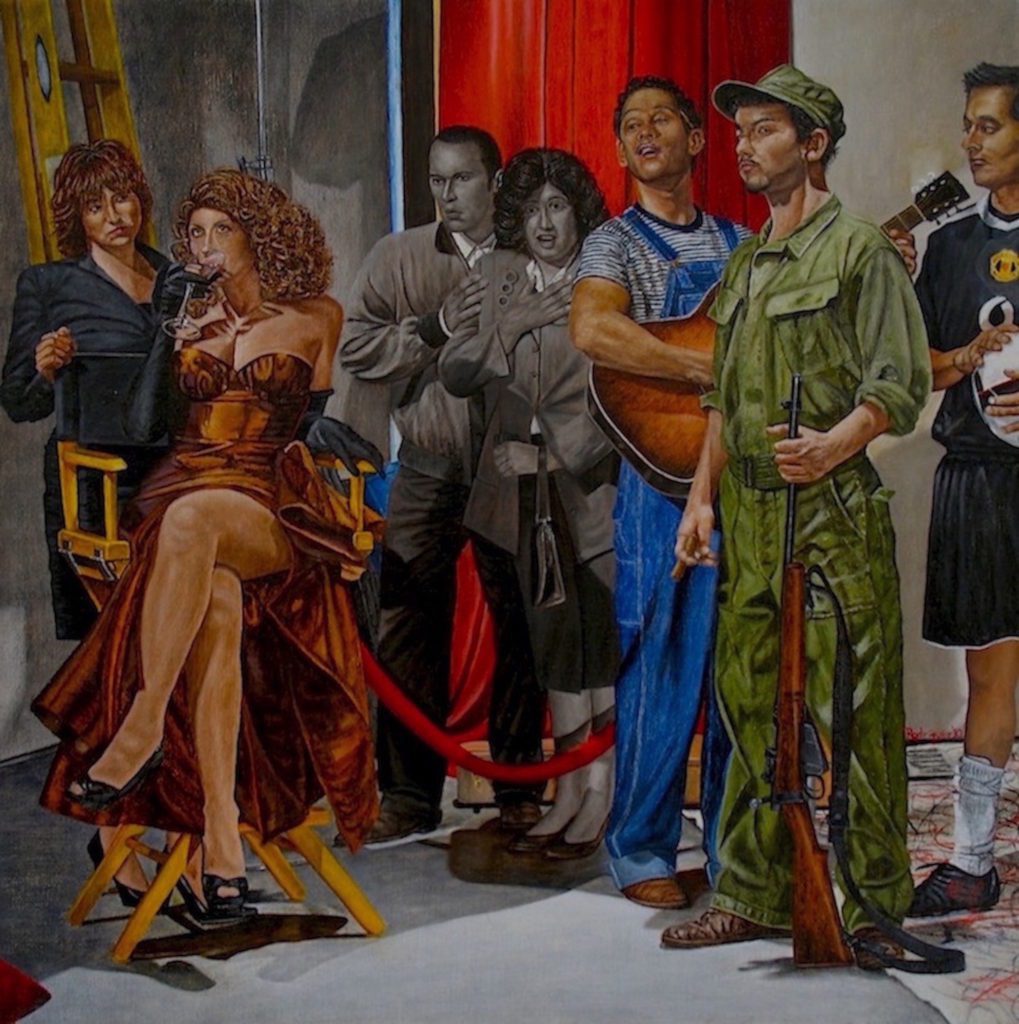

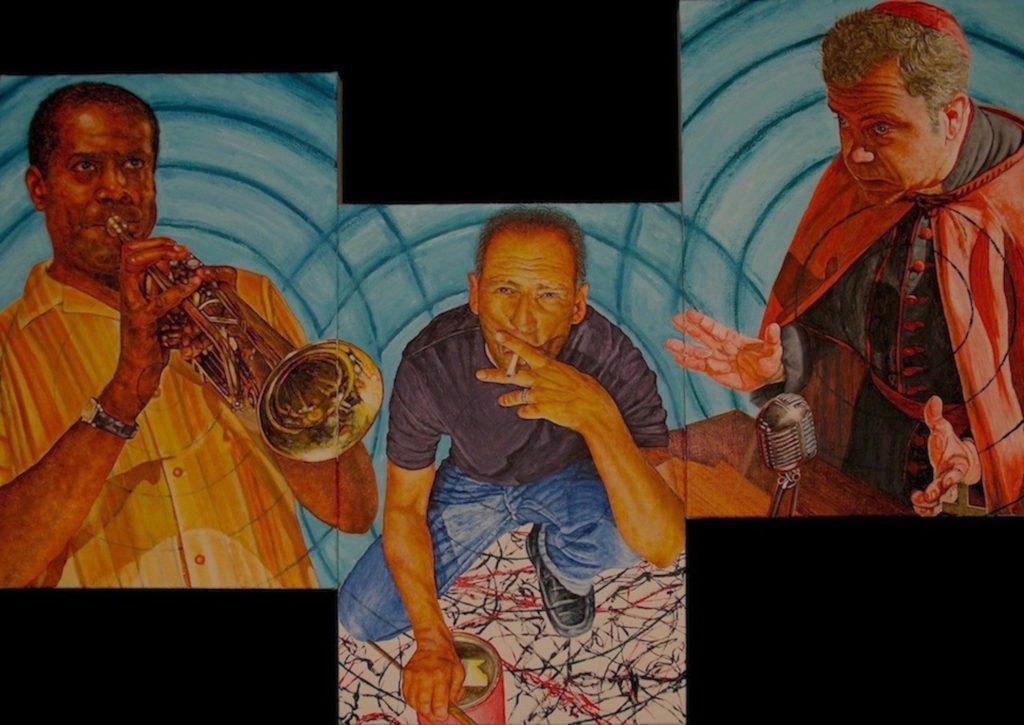
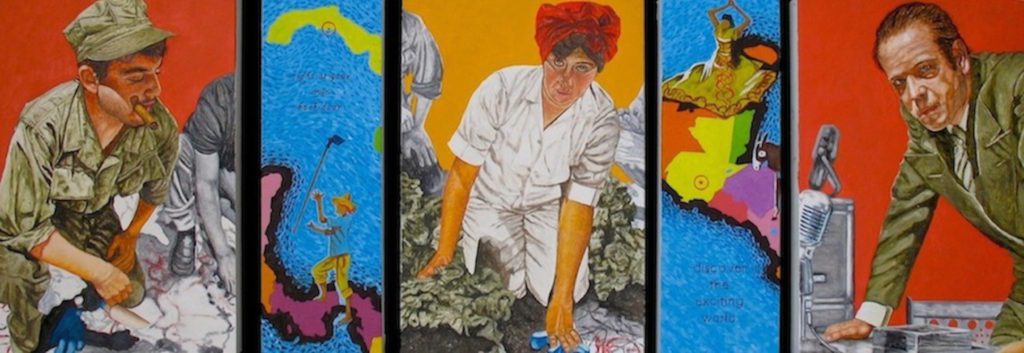
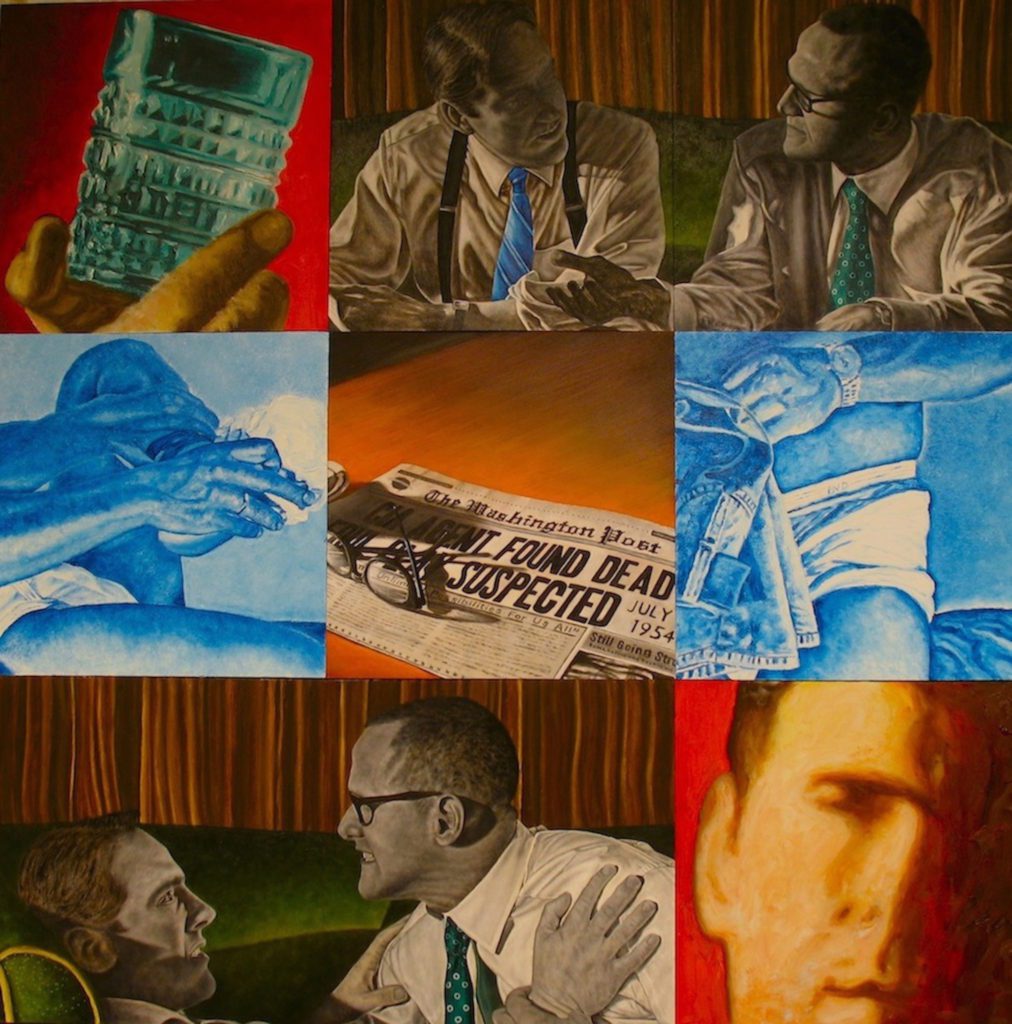

Click image to enlarge and view details
ENDLESS, ENDLESS
Endless, Endless is a multidisciplinary series comprised of oil paintings, ink drawings, relief and intaglio prints. At the heart of the series is the subject of war. What does it mean for a nation to wage an endless campaign of war? What costs are incurred for the nation waging that war? What are the physical, emotional, psychological, and financial effects to all persons involved? Is war inexorable or is it possible to end endless war?

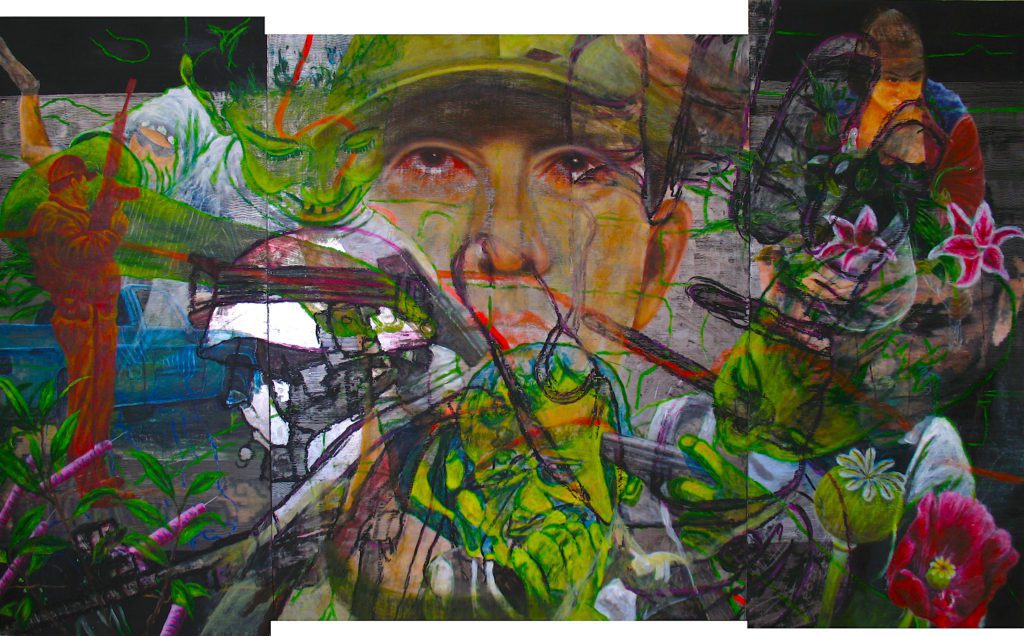
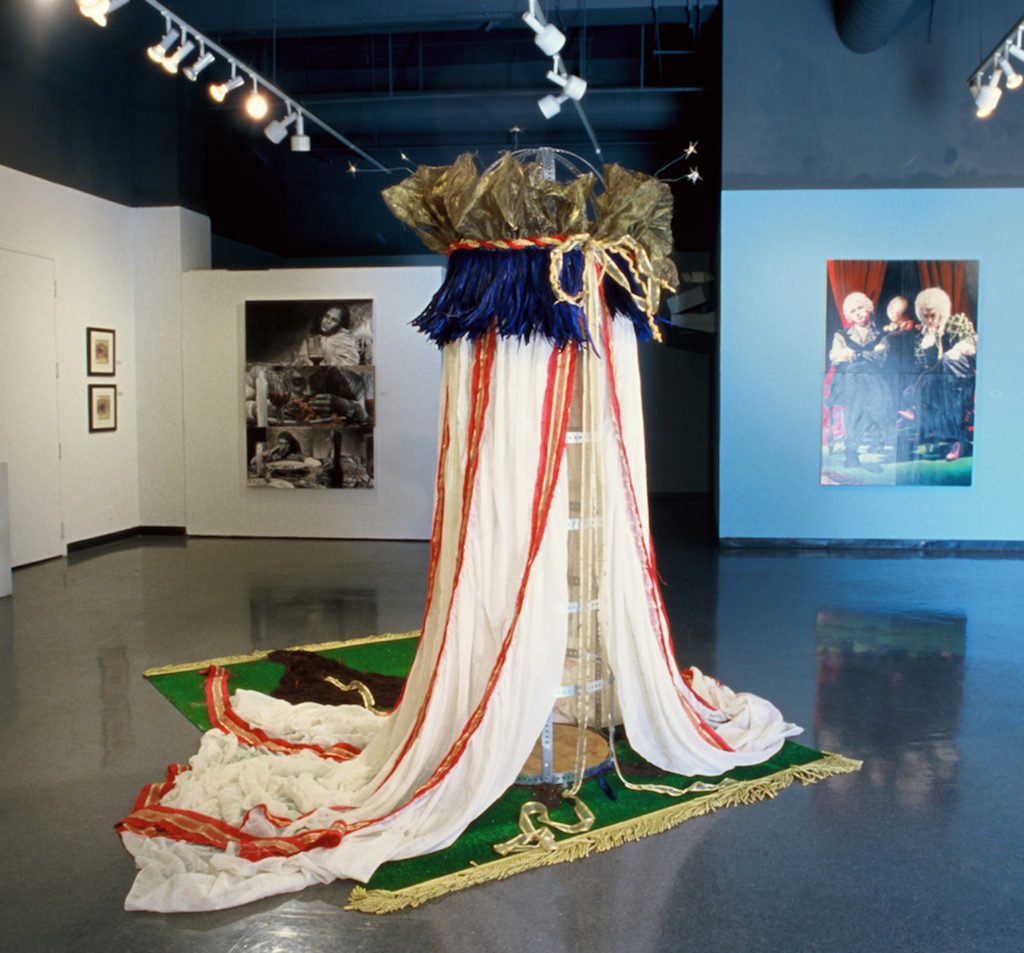
Click image to enlarge and view details
2007-2008 - THE MIDDLE OF SOMEWHERE
My latest series of oil paintings, The Middle of Somewhere, addresses issues of globalization through the lens of a working class Mexican American family photo album. Some of the imagery included – those piñata picnics in the park, maquiladoras, the zoot suit riots, the cannery lives of women, corner day-laborers, the 70’s Hollywood bar scene, a Pentecostal baptism, the carts of the homeless, and a mariachi band accompanying it all.
For inspiration, I have used stills from my latest film of the same title to experiment with juxtaposed histories and aesthetics as well as to interrogate how the media continues to influence and shape how we see each other, ourselves and the world. The film is simultaneously set on the riverbank where my grandparents settled after immigrating from Mexico and in a film studio. The action revolves around a picnic, real and staged, with a group of friends debating the value of art, family, politics, and the power of the media. Eventually, the two stories collide and prompt the viewer to question the shaping of reality. The paintings, which fragment the narrative, as well as problematize the genre of history painting, are intended to spark conversation and question what it means to be a participant on the social/political landscape in these turbulent times. It is one of my goals that these paintings allow viewers to gain greater awareness of the lineages of immigrant stories, and to see the fragments of their own pictures connected, in order to present a larger story to the project and topic of becoming and belonging in America.
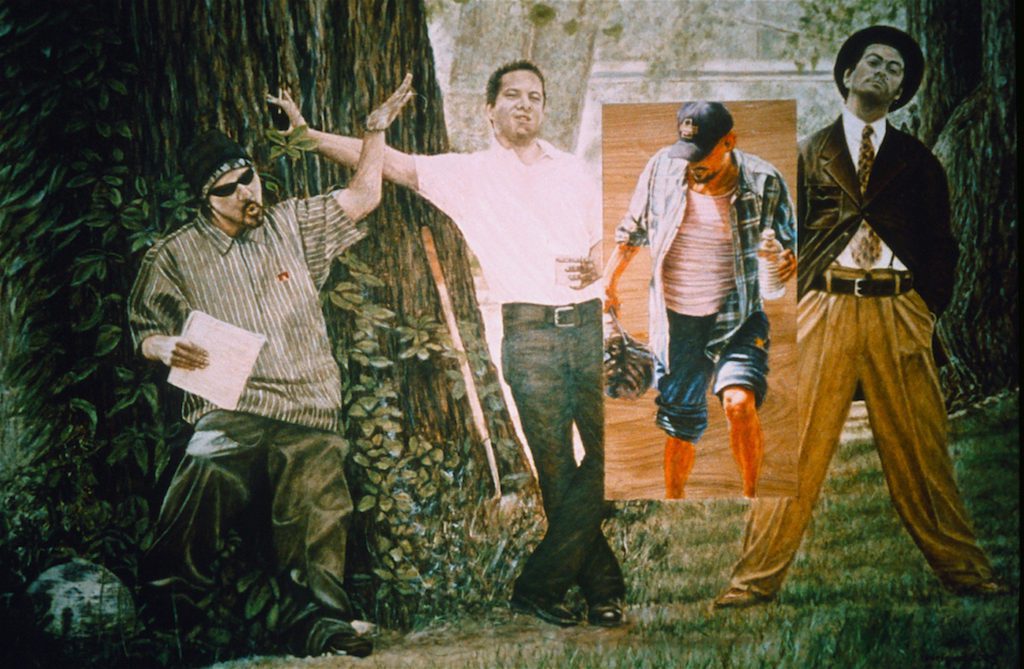
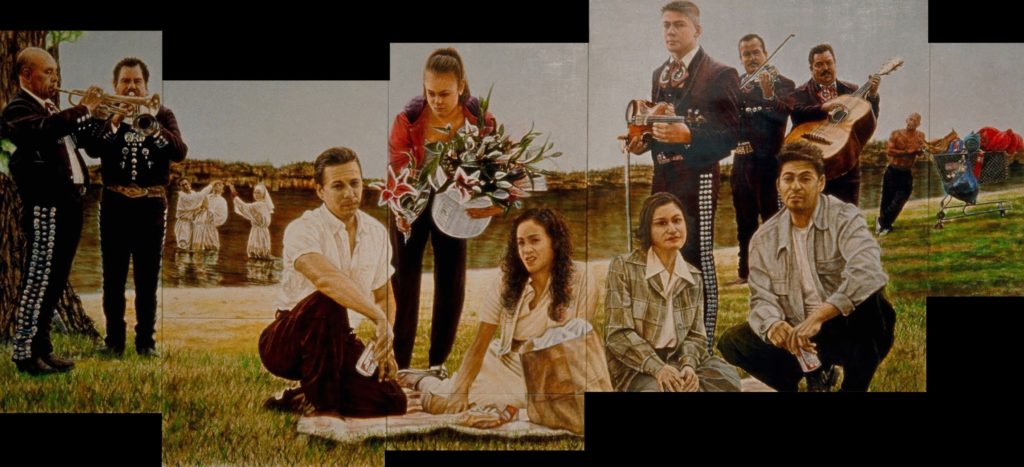
Click image to enlarge and view details
2003-2006 - THE FLAT EARTH
The Flat Earth is a series of paintings that looks back to the sixteenth century, El Siglo del Oro, and parallels it to the twenty-first. At one time, prior to Magellan’s voyage, the world was thought to be flat. Now the world is more round than ever and “globalization” plays everywhere. The paintings explore how past beliefs and value systems continue to influence and shape how we see the world and ourselves. Whether the inspiration is taken from the economic, political or domestic arenas, all the portraits and narratives in the series challenge and contest “official knowledge and histories”.
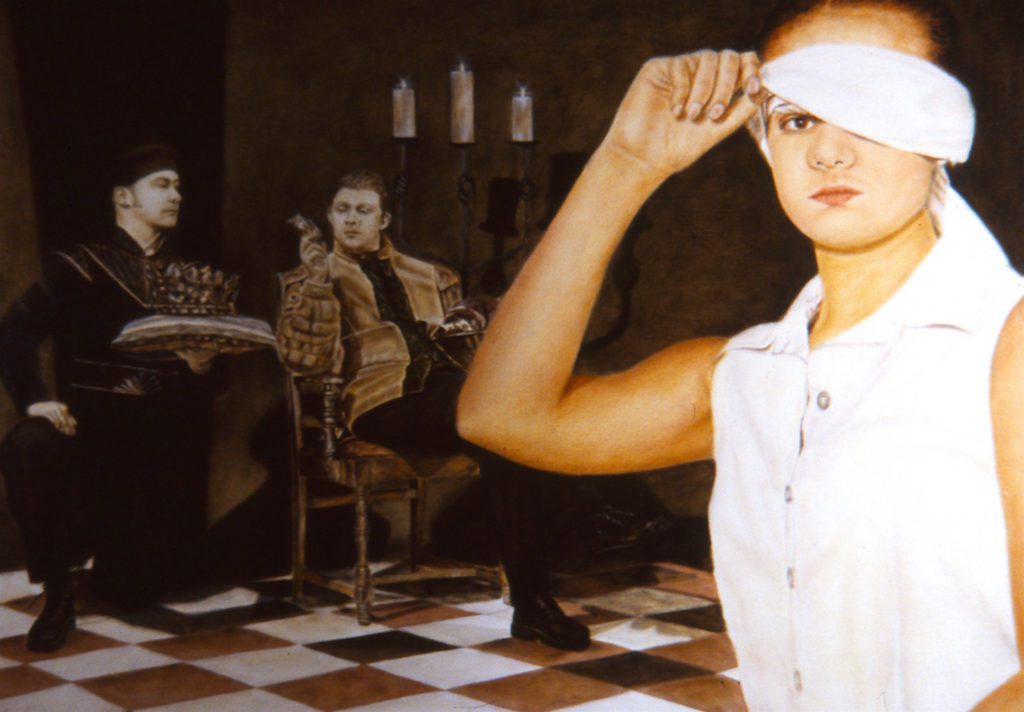
Click image to enlarge and view details
1999-2002 - INTERRUPTIONS
Interruptions is a series of oil paintings that explores the fantasies and fears that manifest when Chicano/Latino gay men seek relationships. The paintings juxtapose, contrast, and superimpose family photographs, staged fictional narratives, and stills taken from my films. My intention of working in this manner is to represent the dilemma of being caught in non-linear historical narratives and unconscious ancestral realities. Aesthetically this body of work challenges the superficial, indifferent and fragmented form of postmodern appropriation and aims to inspire a revitalized look at the ability of narrative and realism to generate dialogue about the content of the art as well as the political stakes of self-representation.
